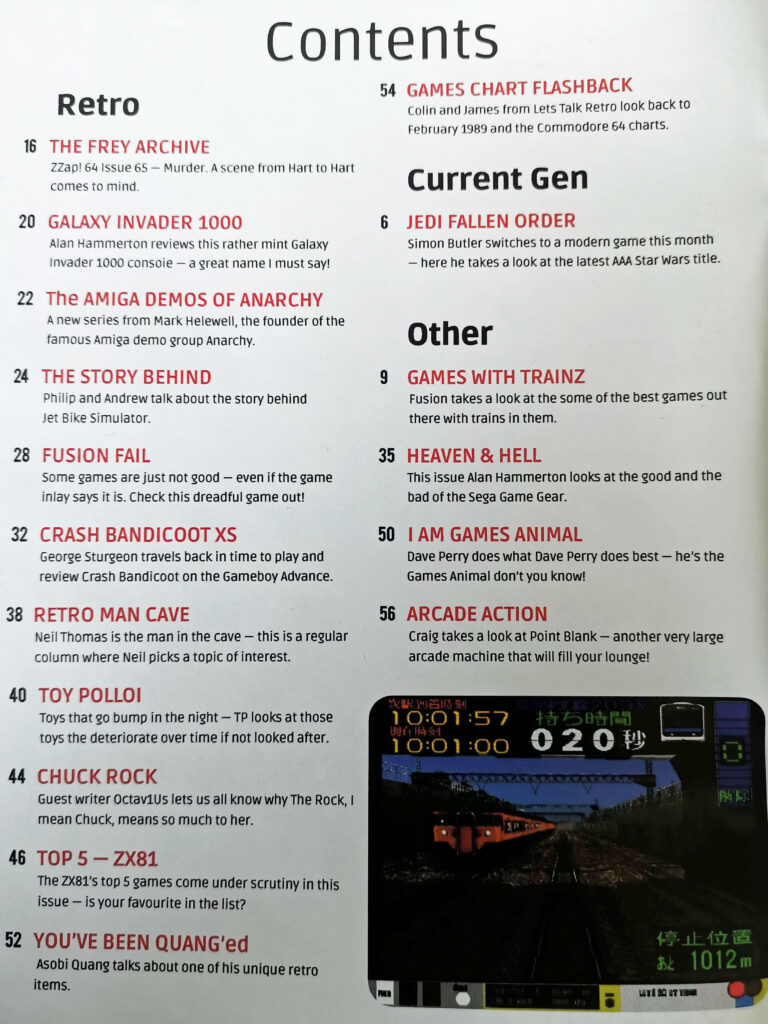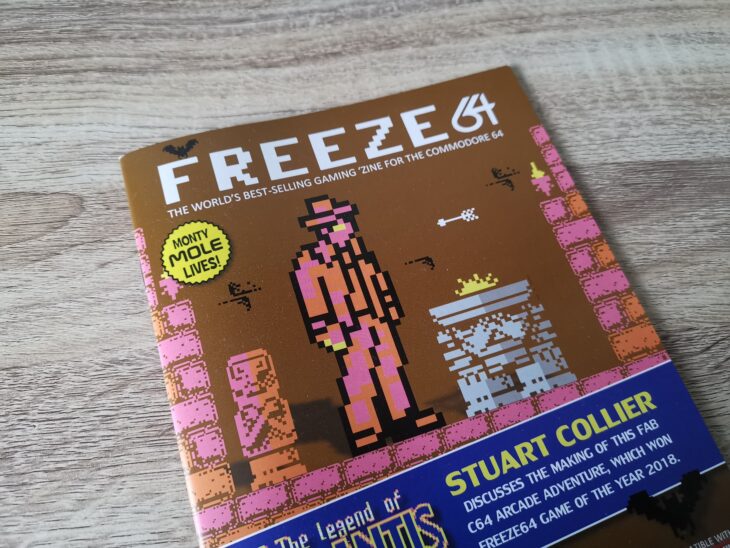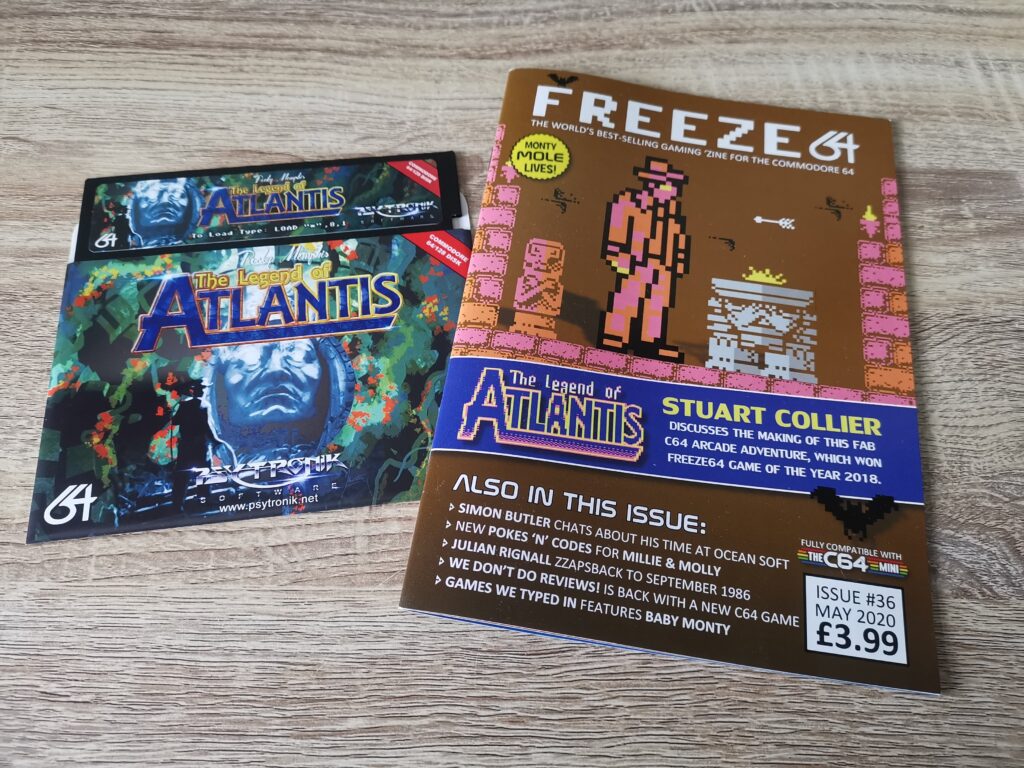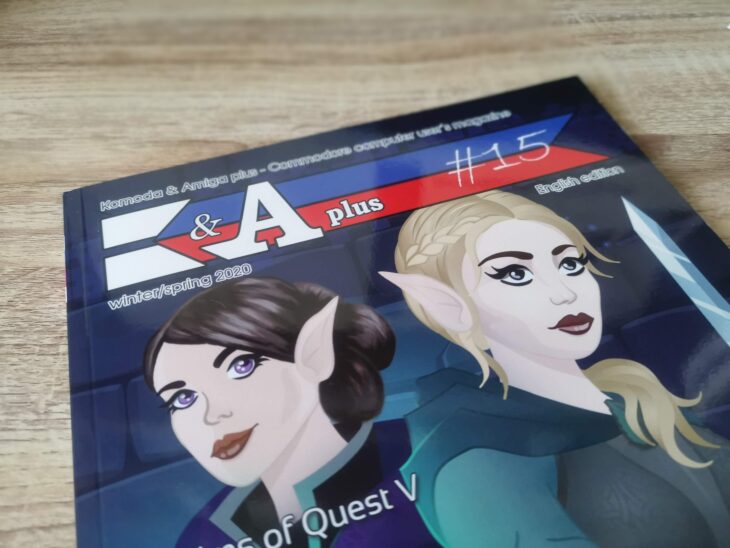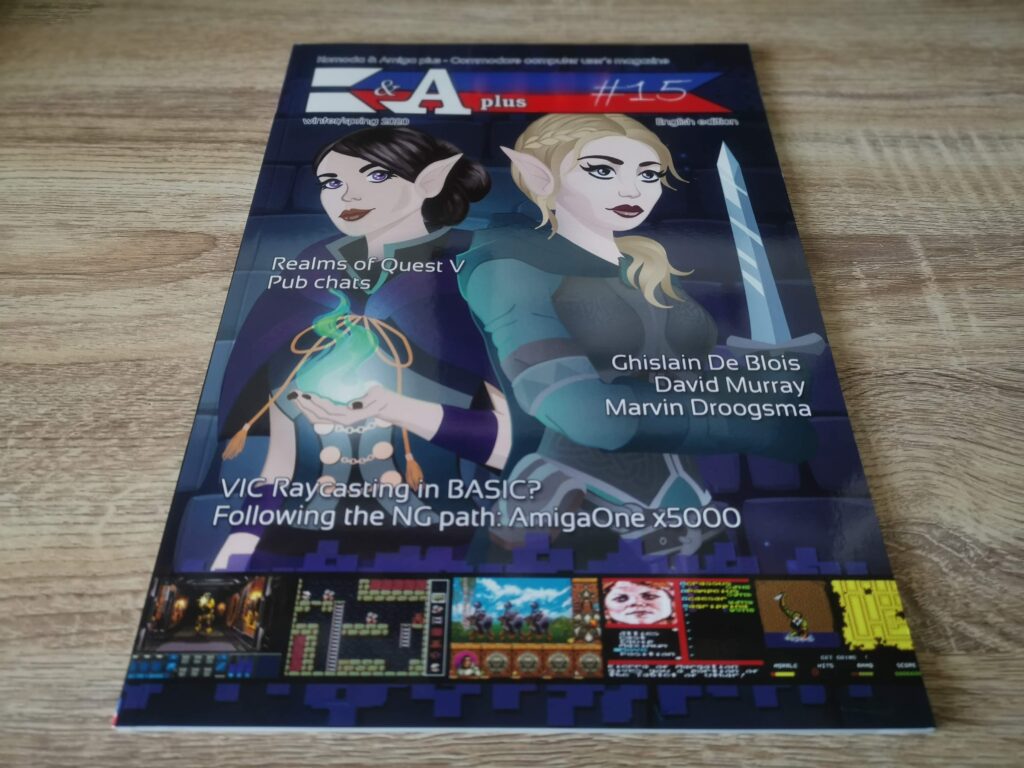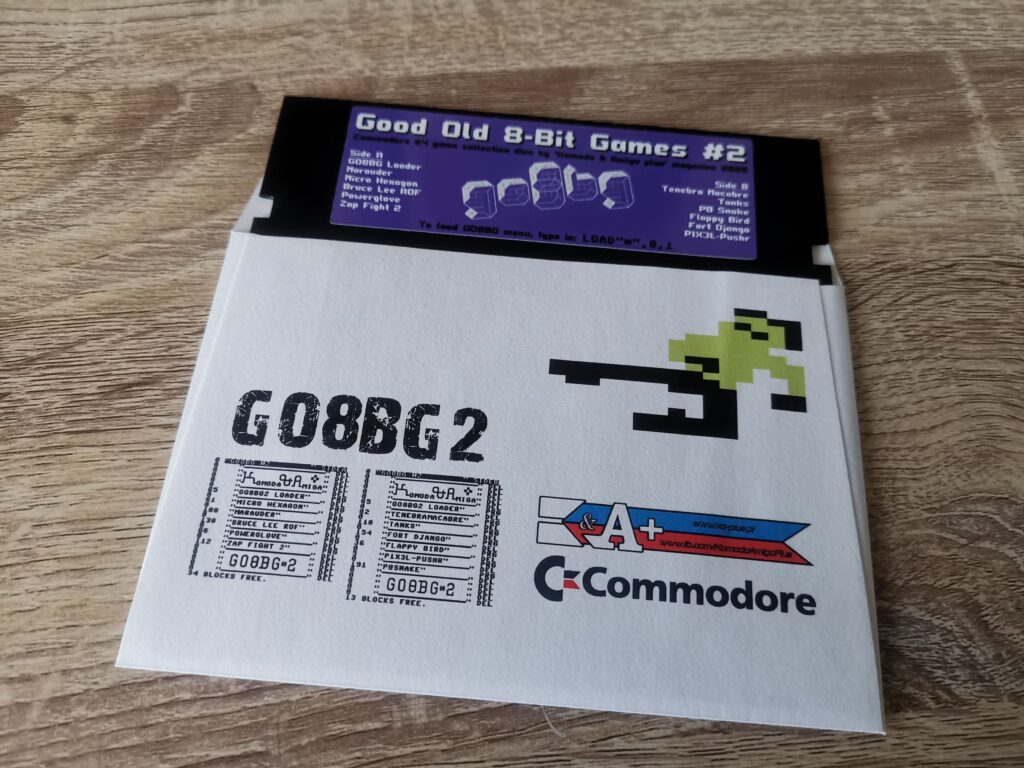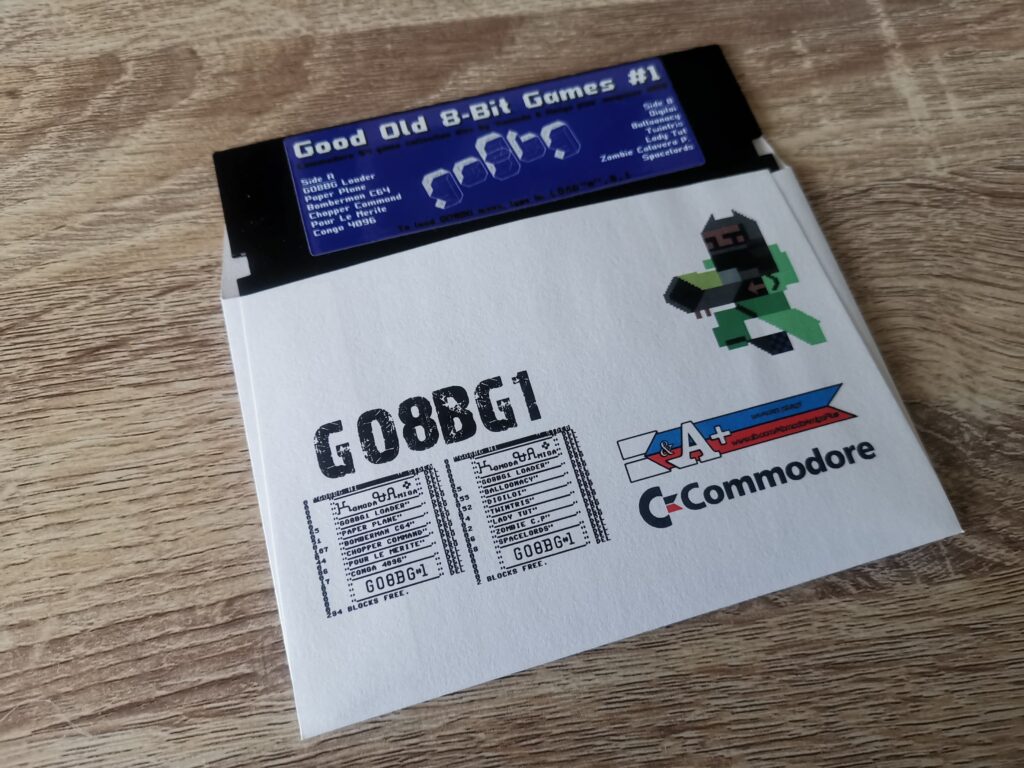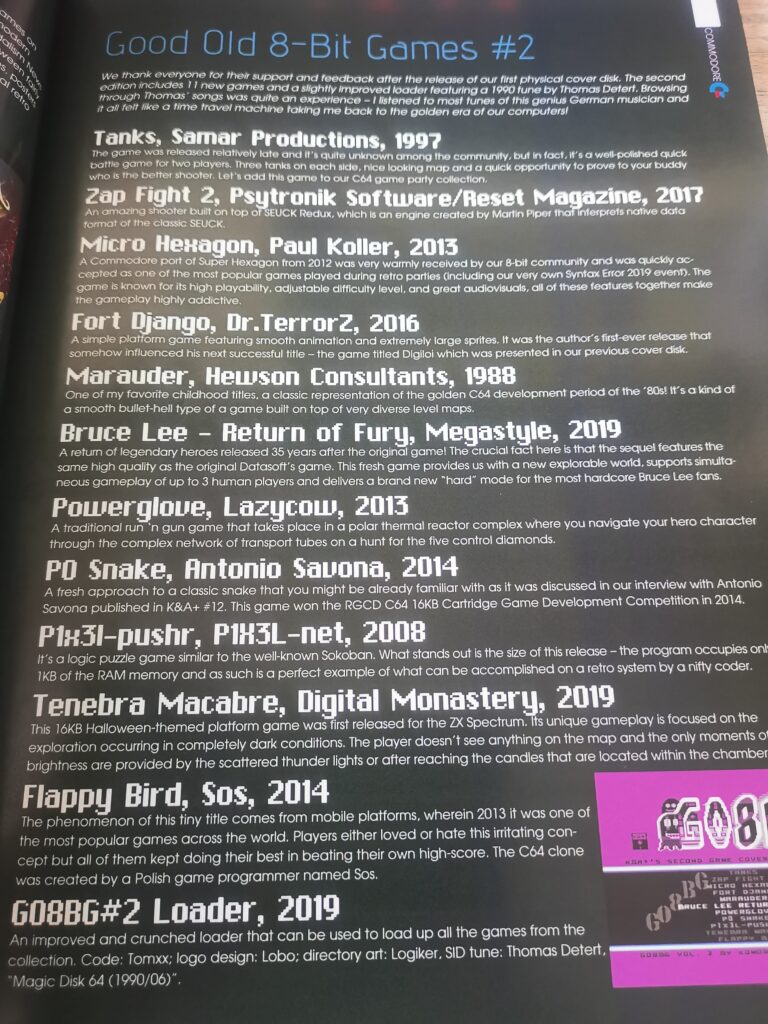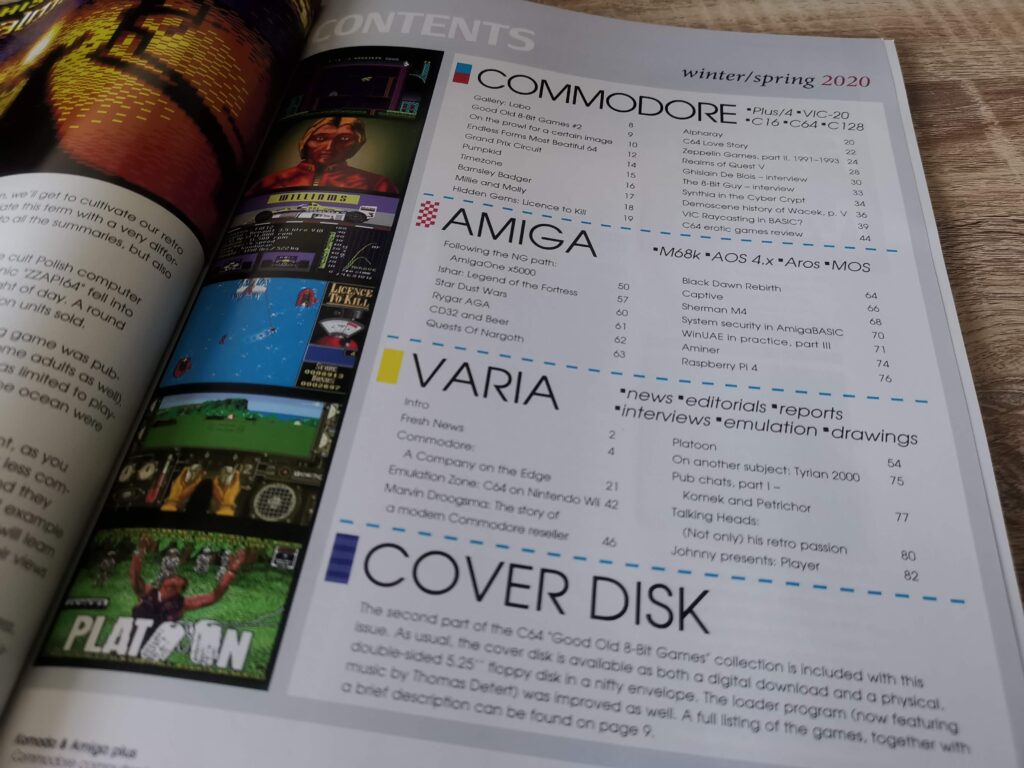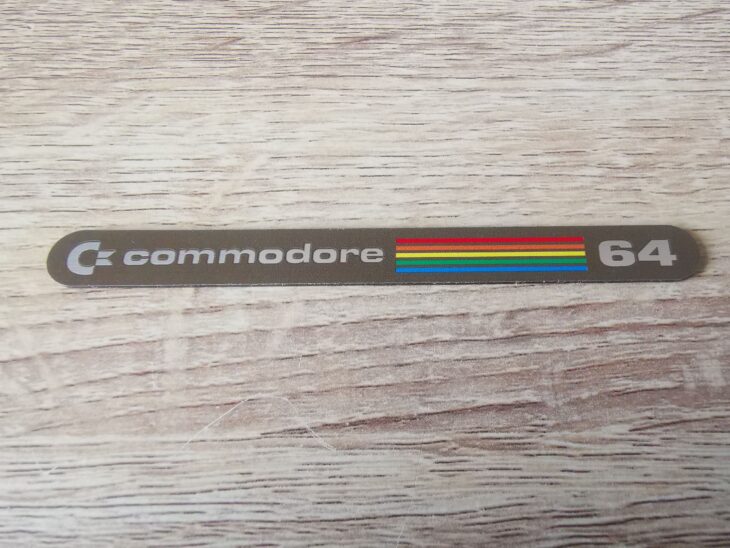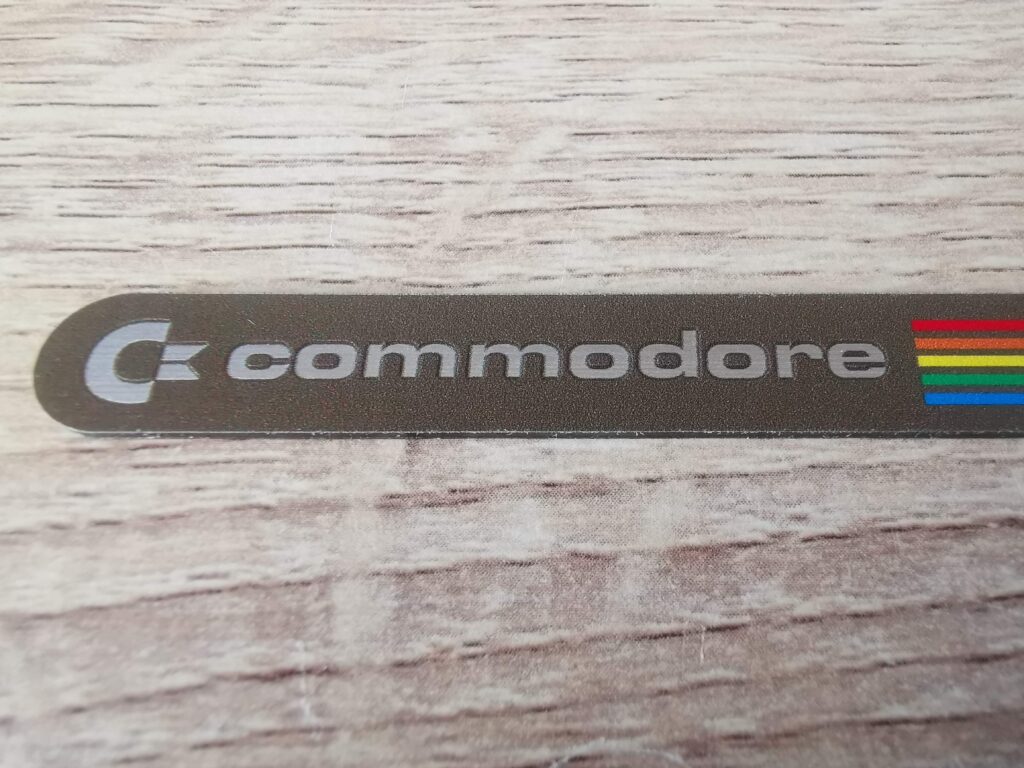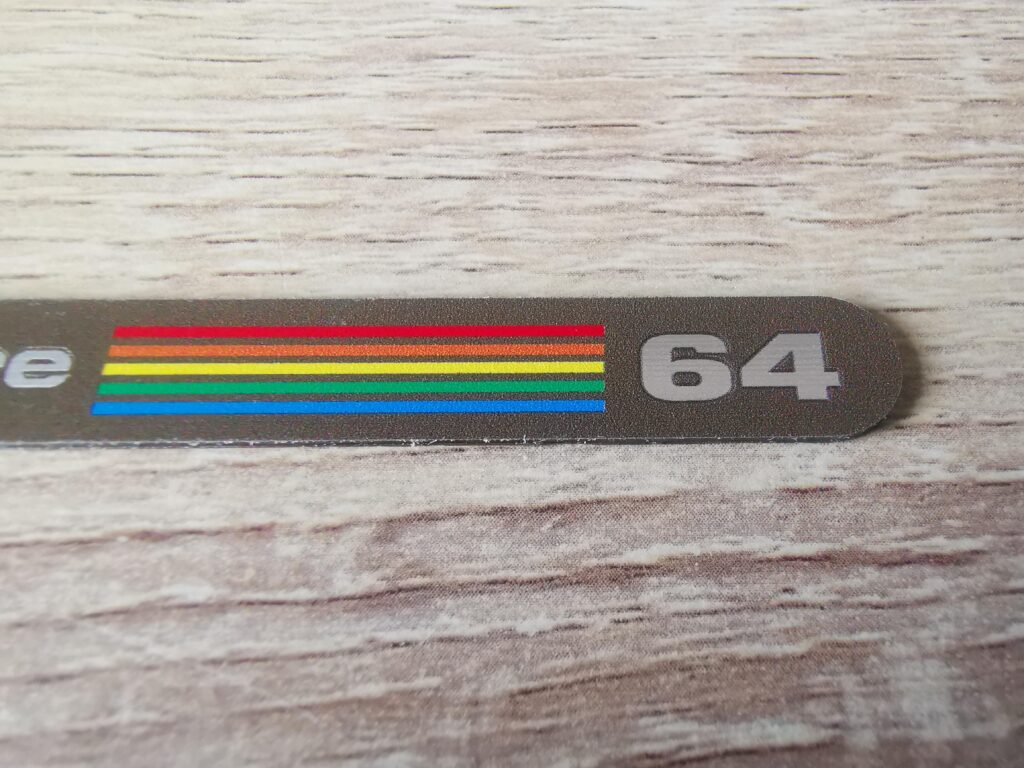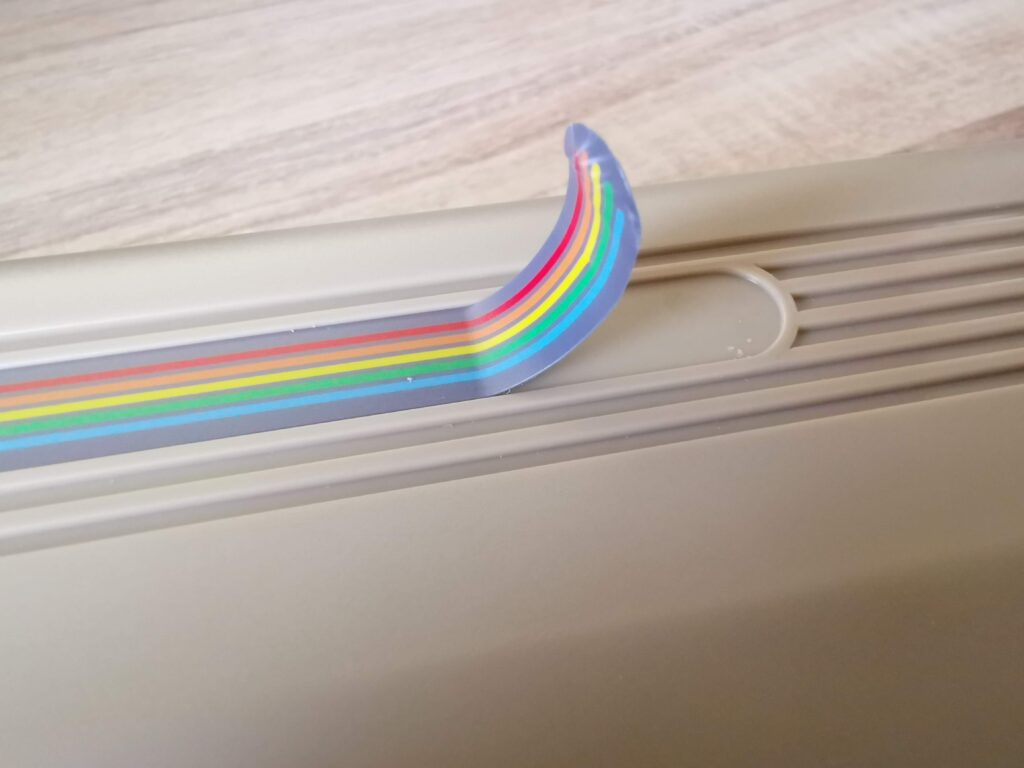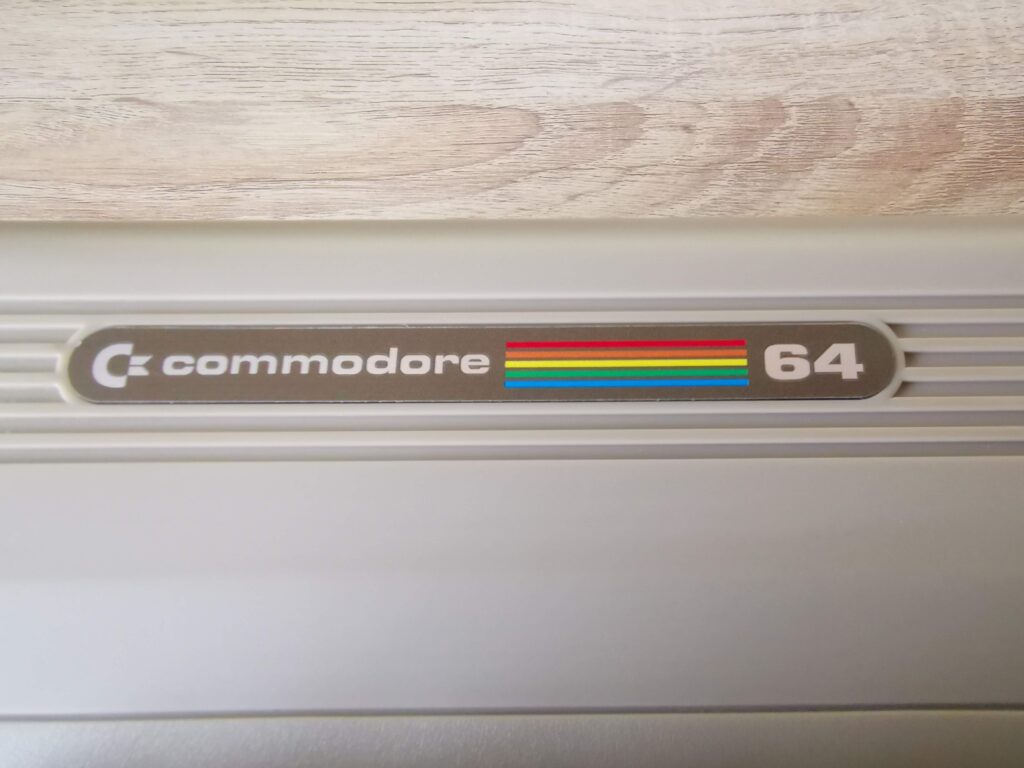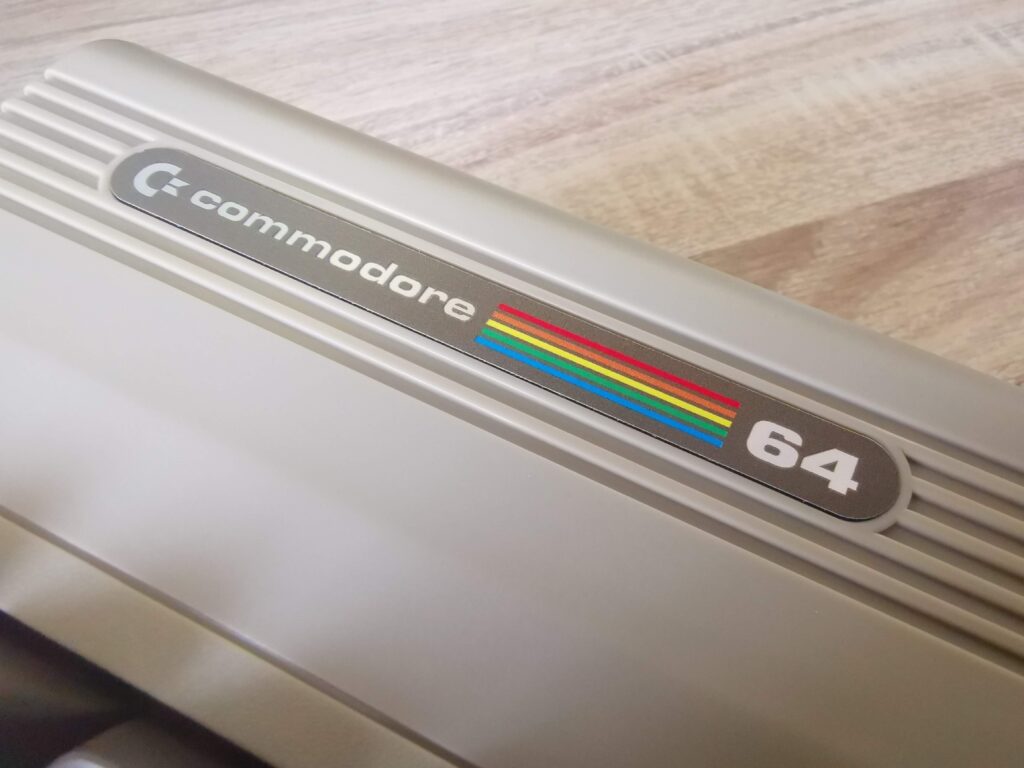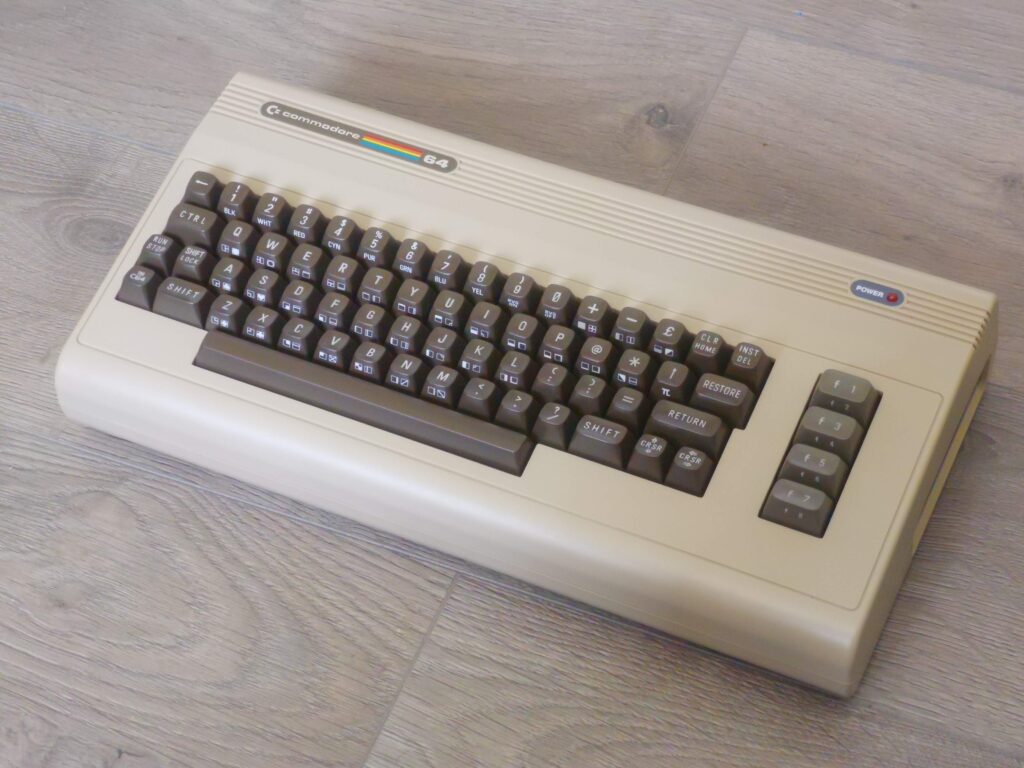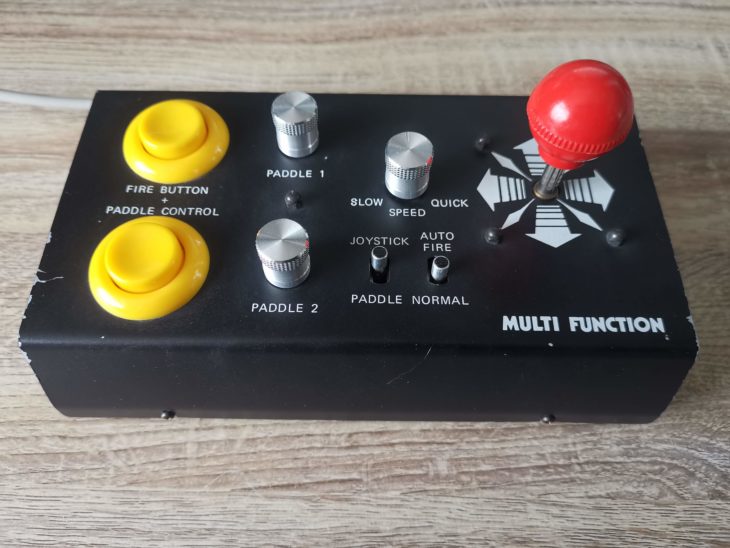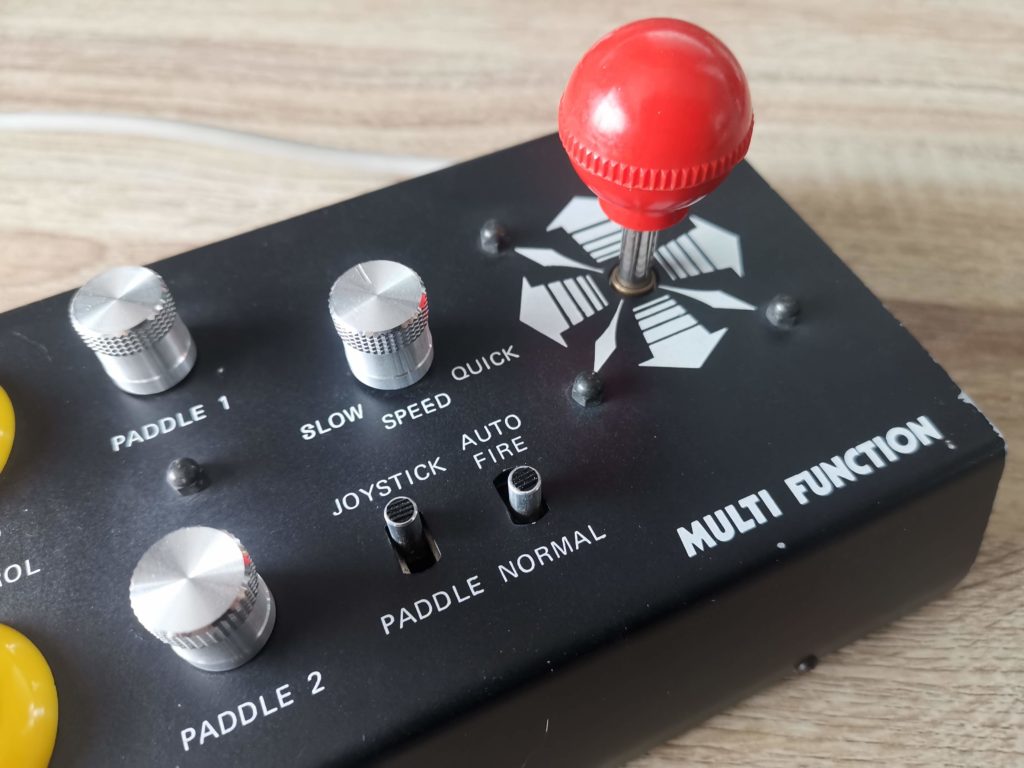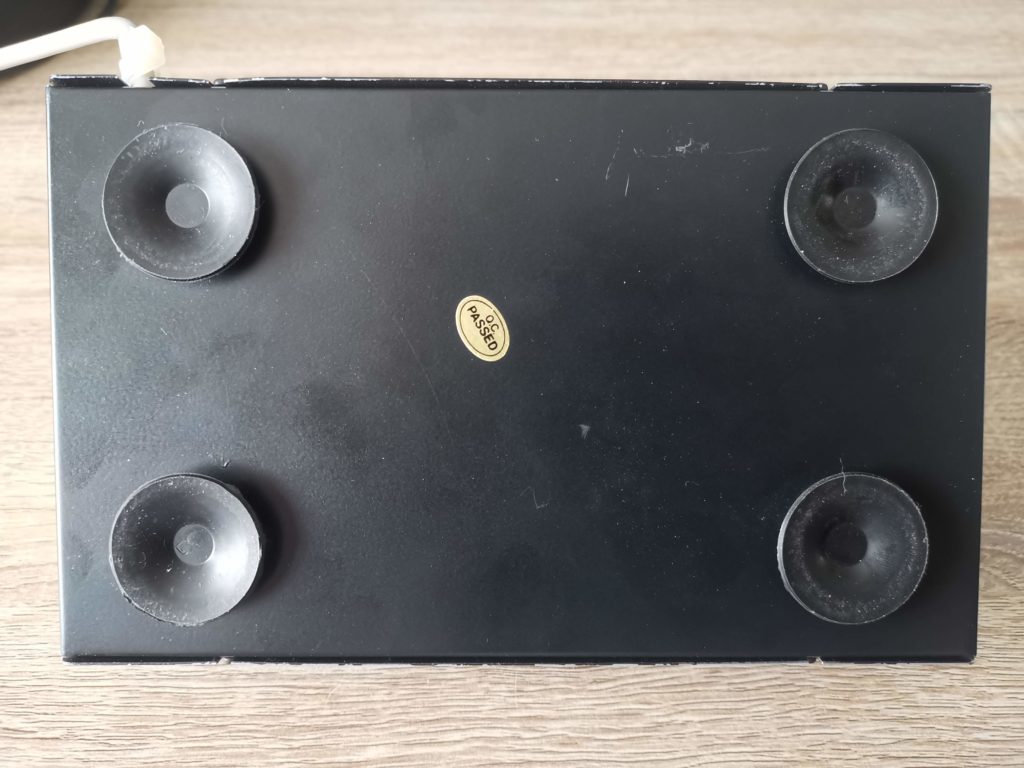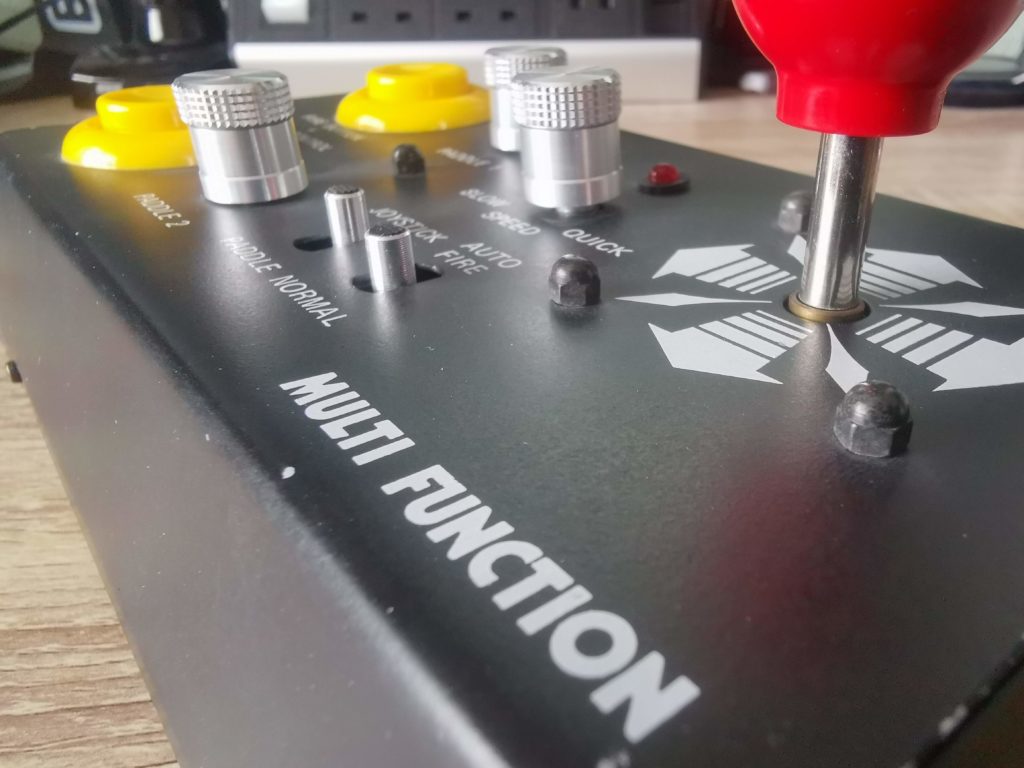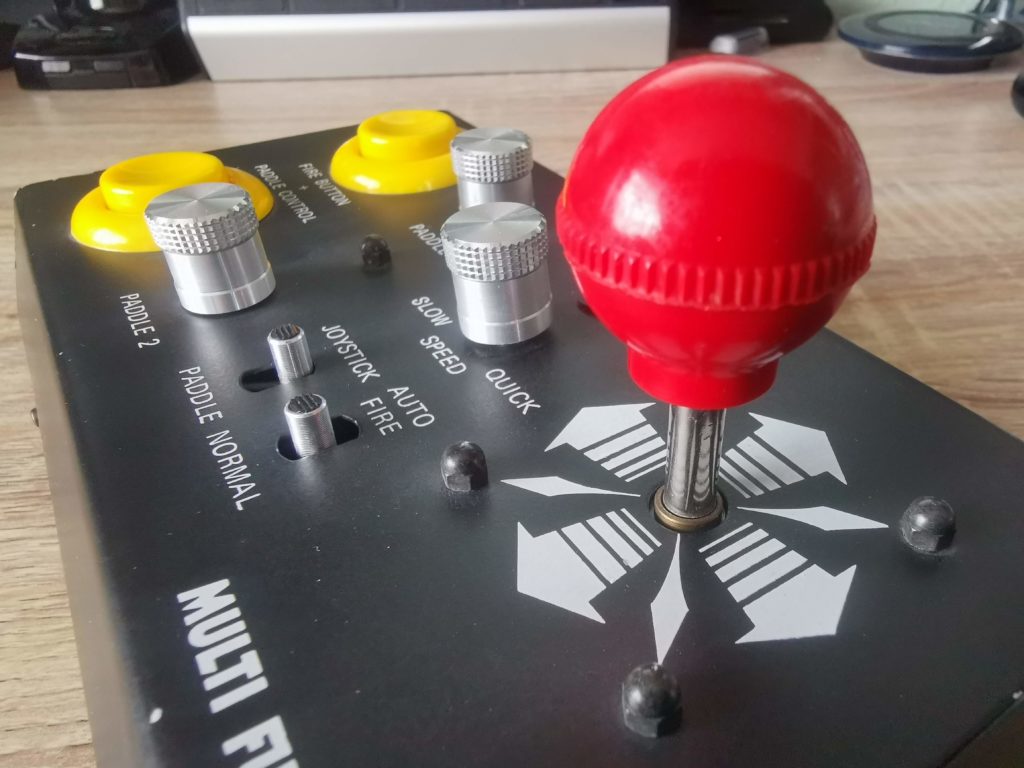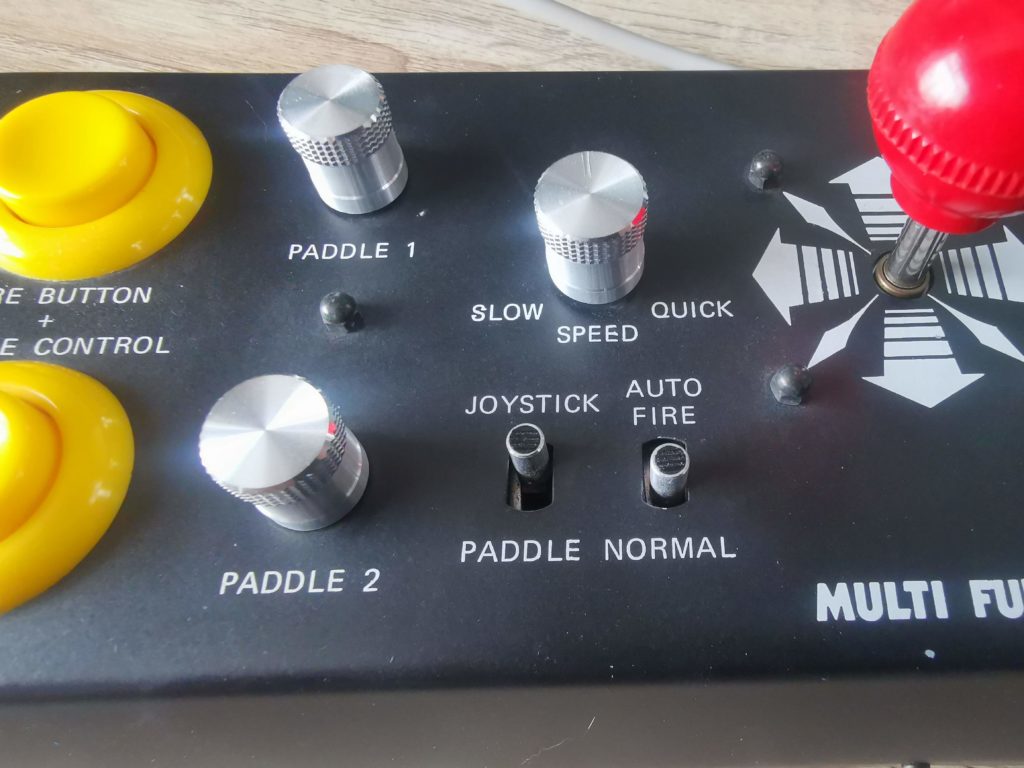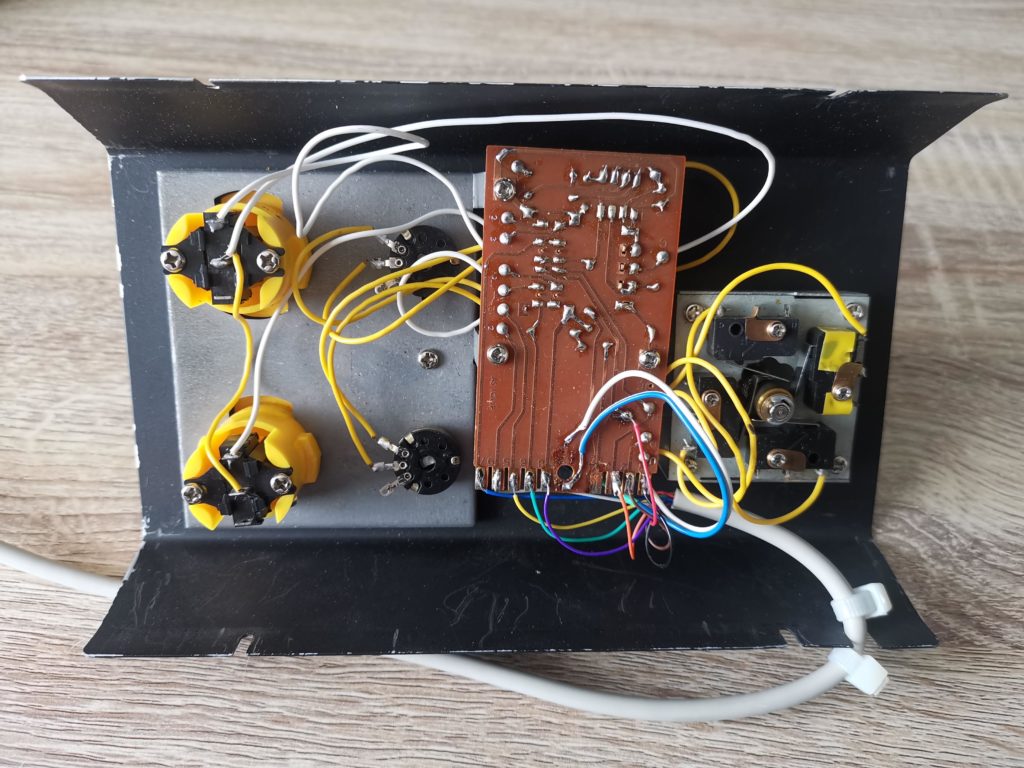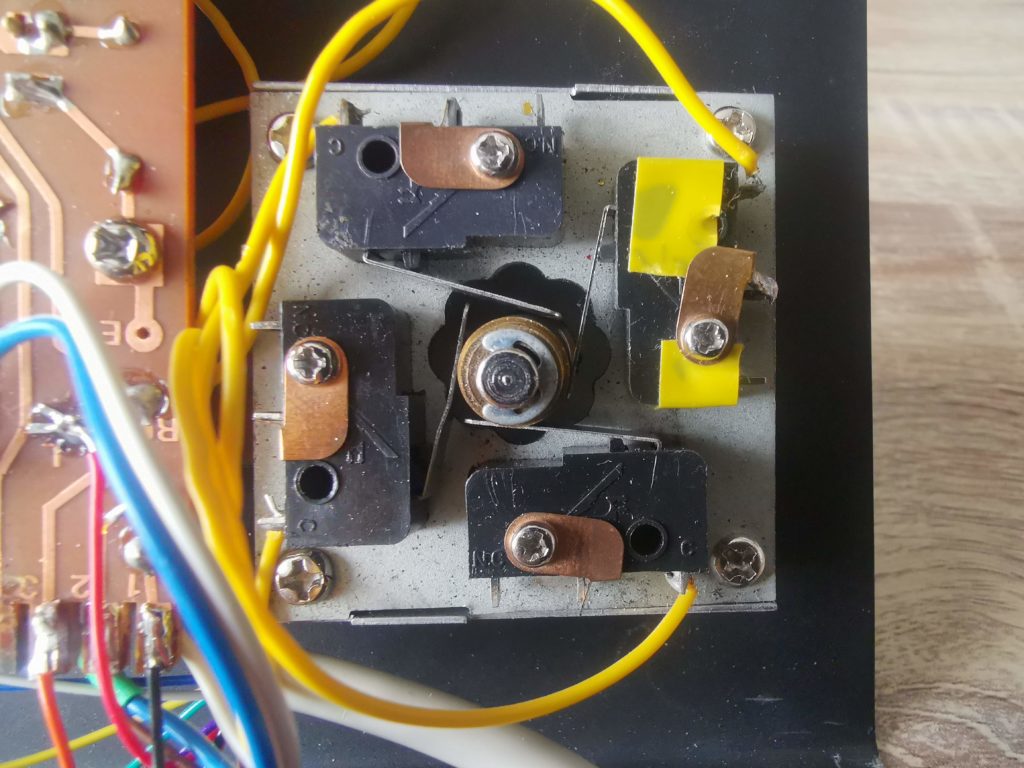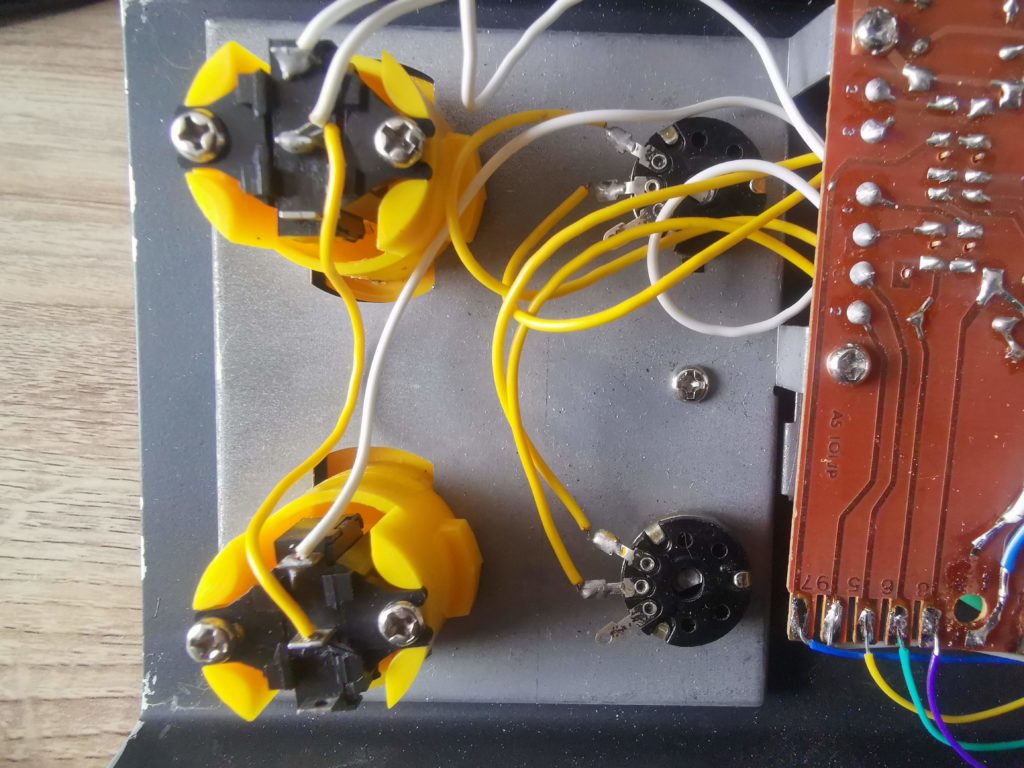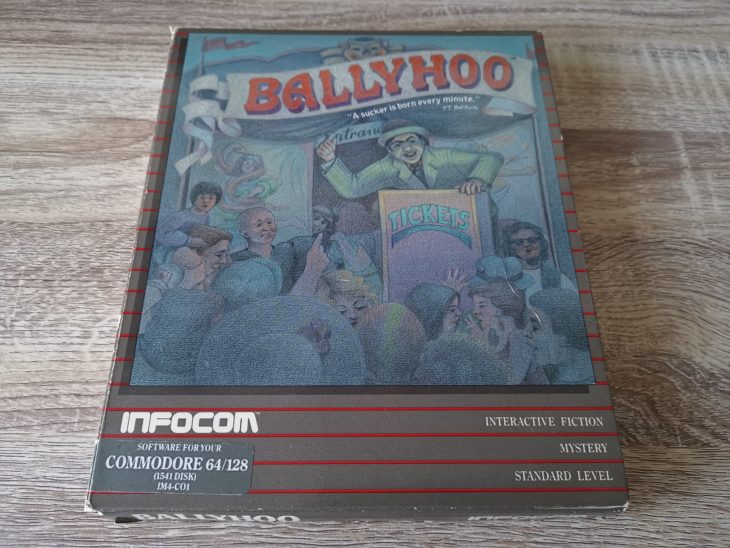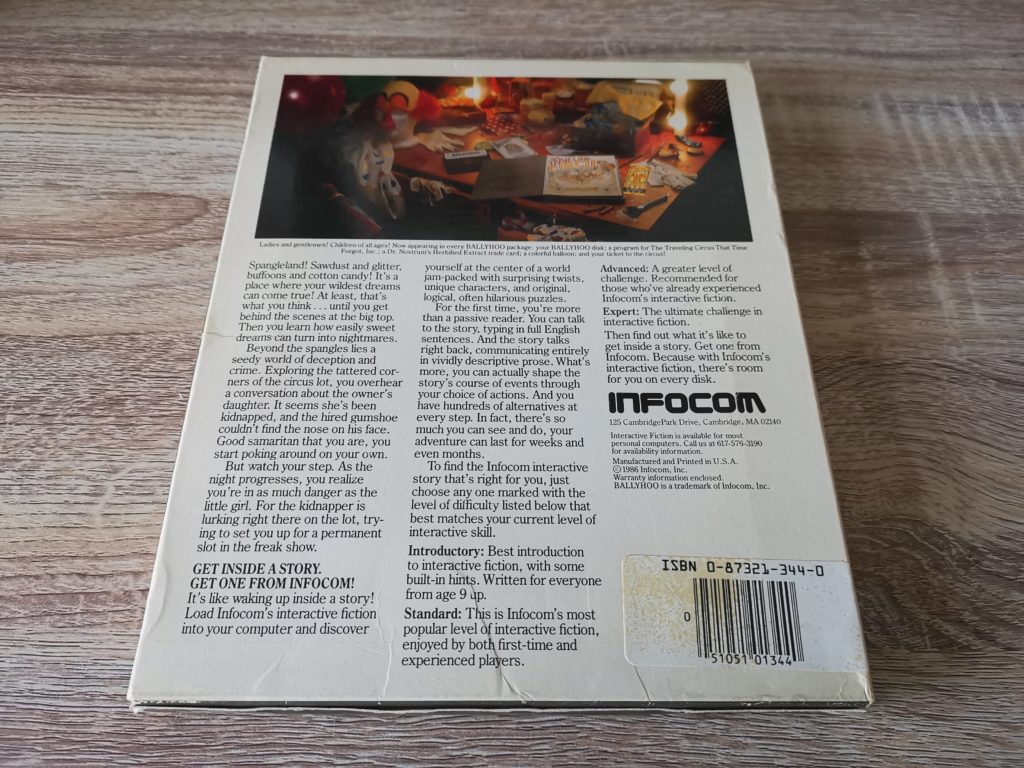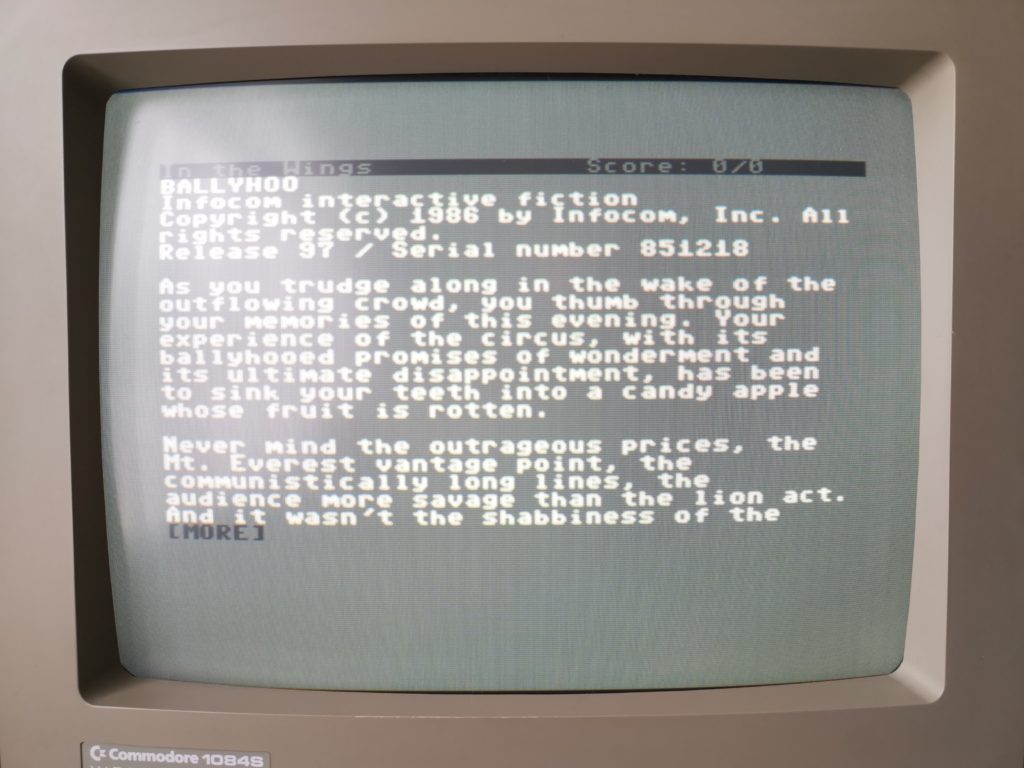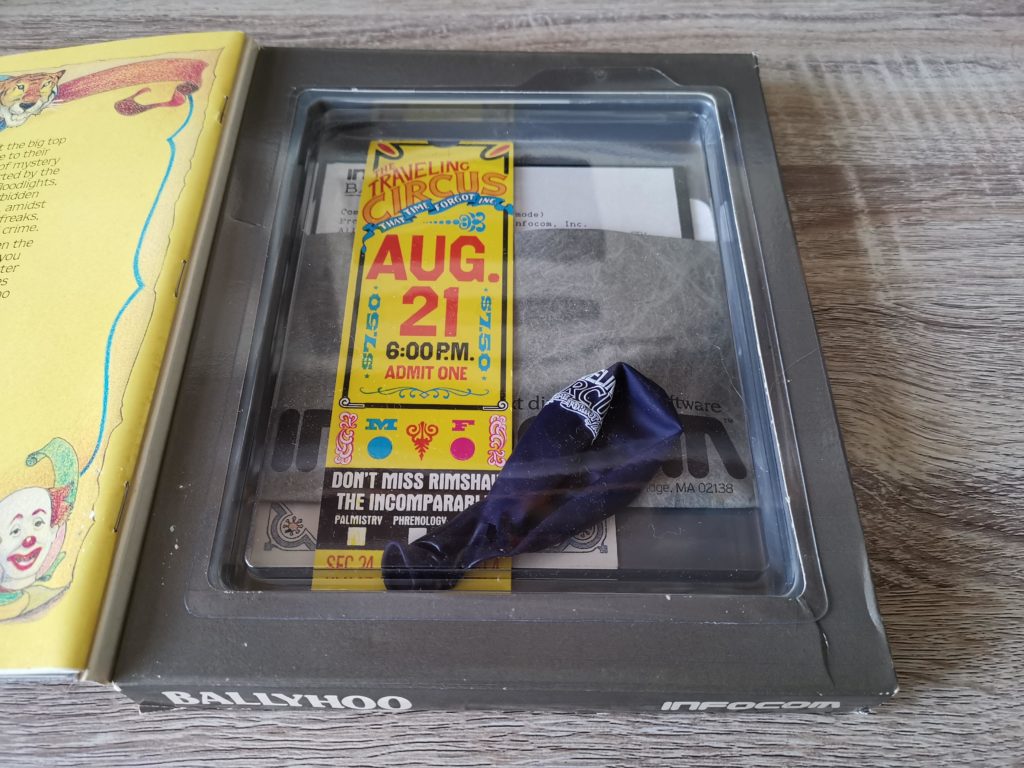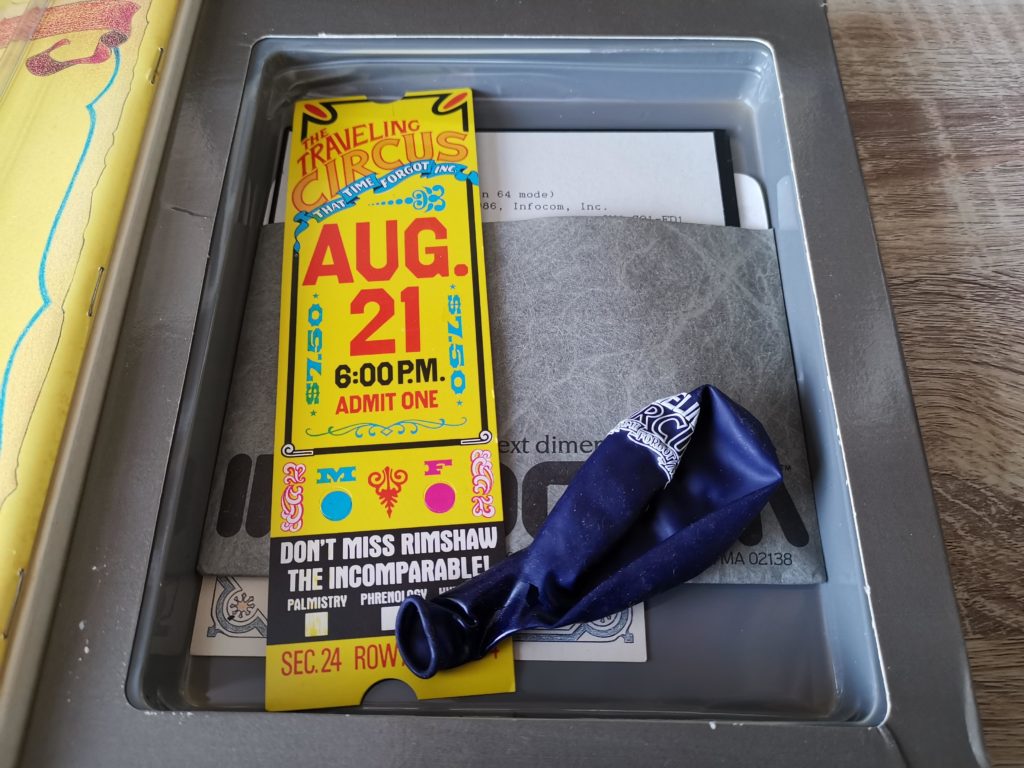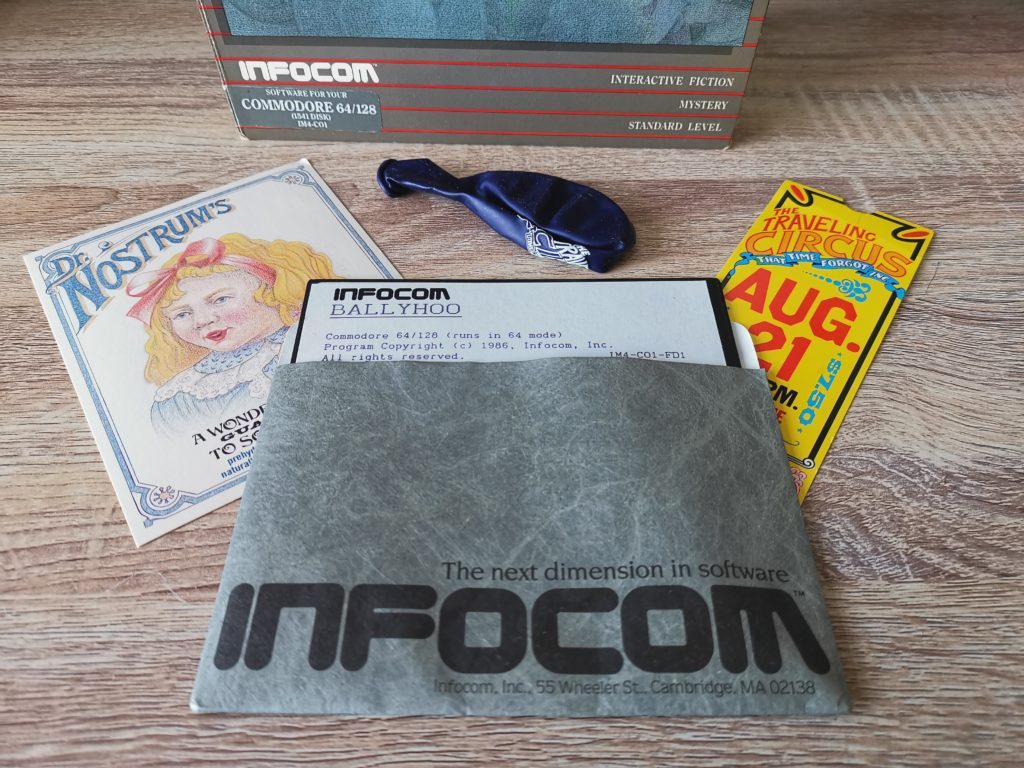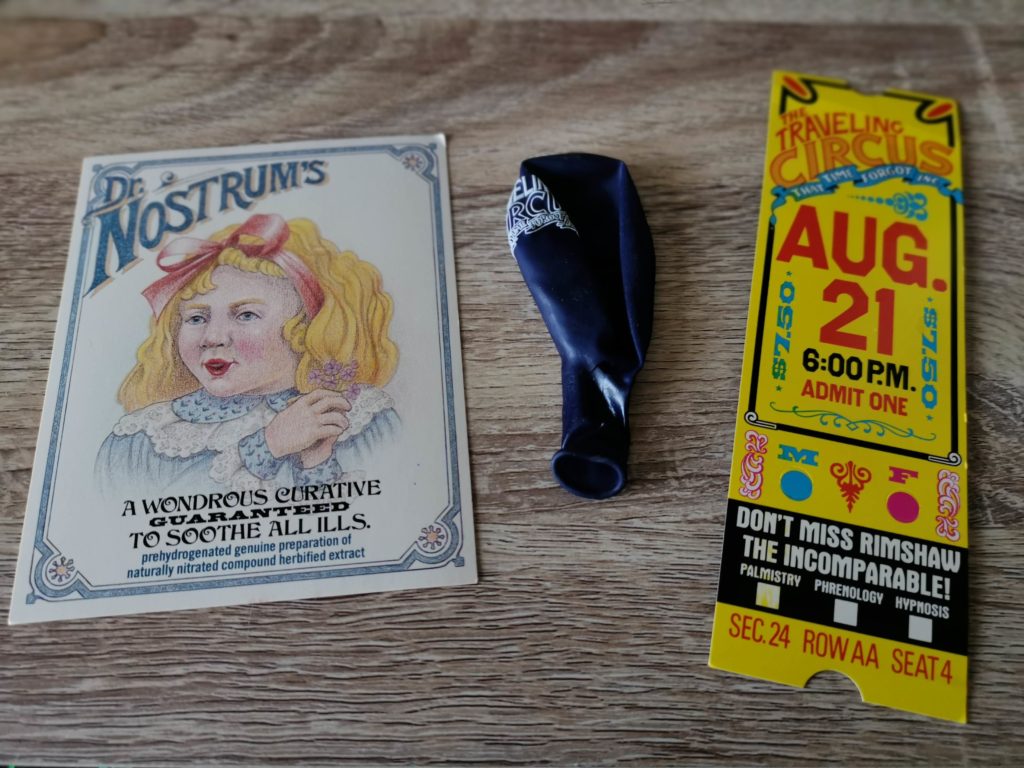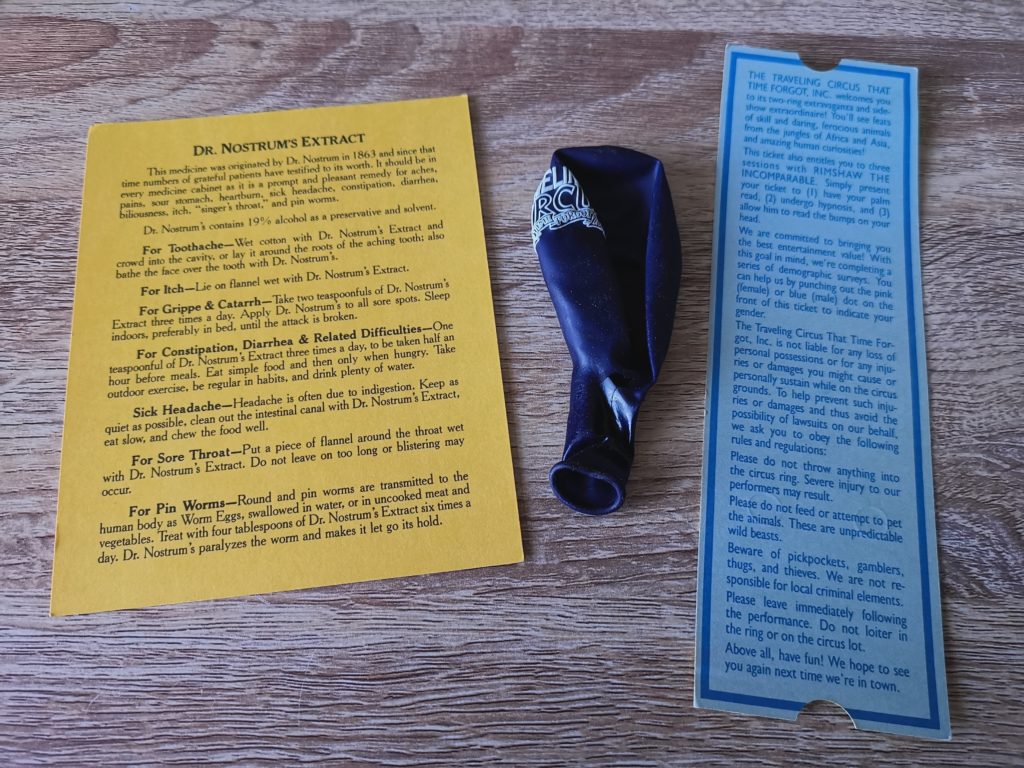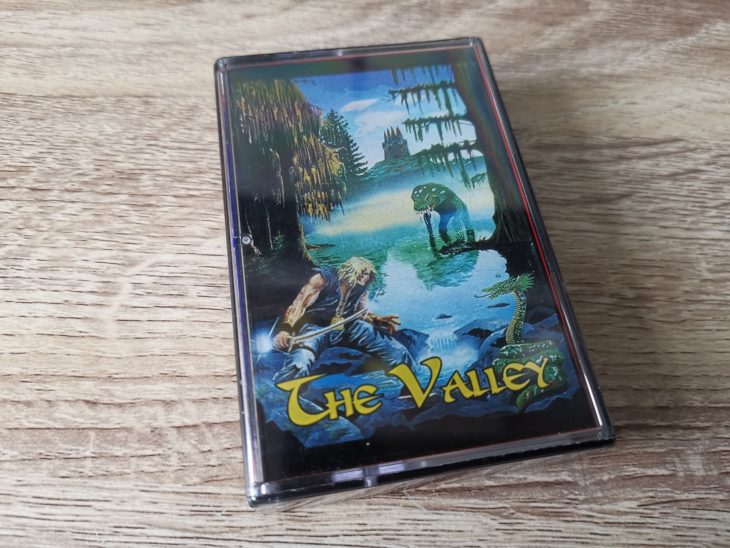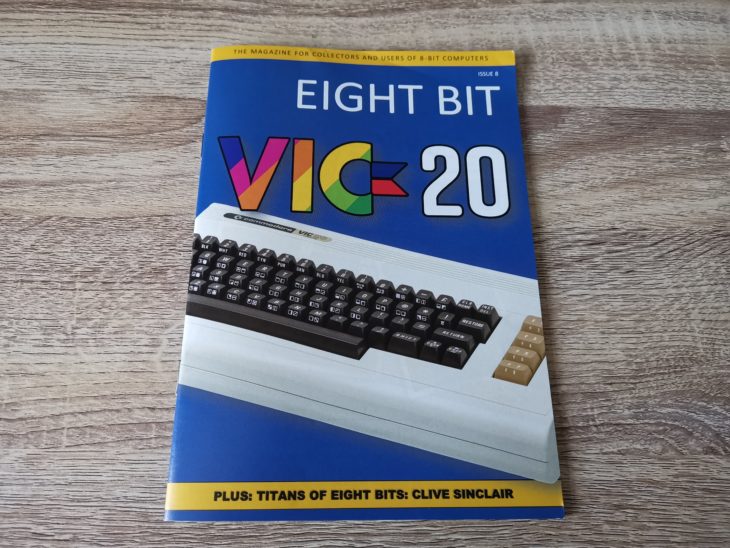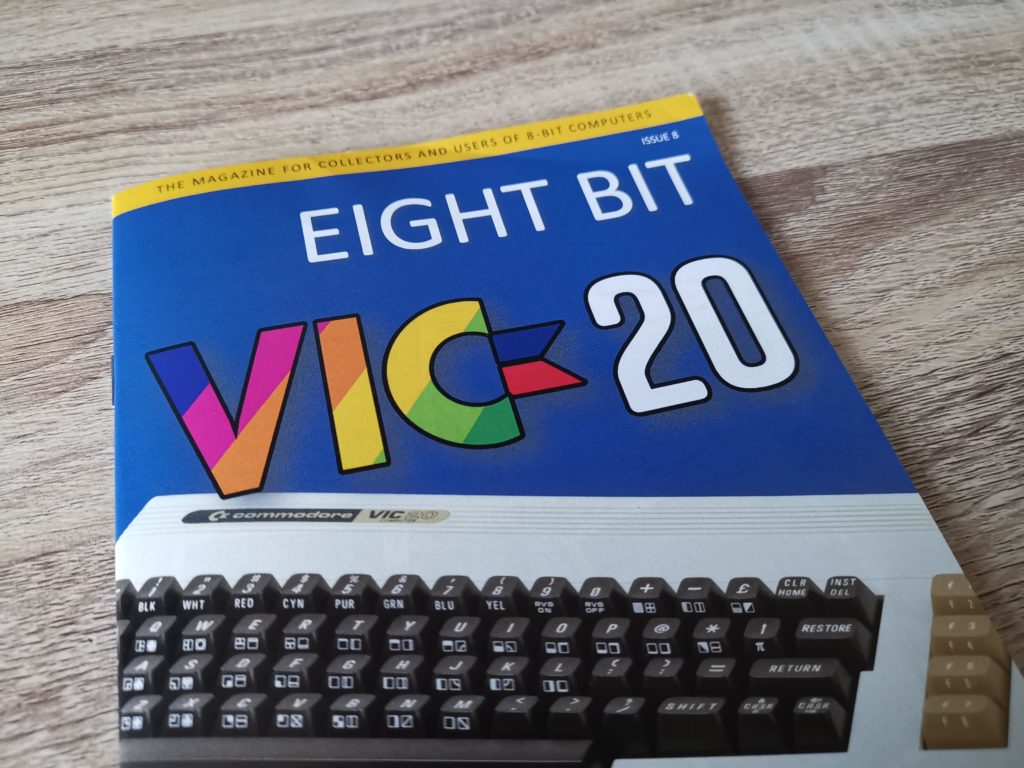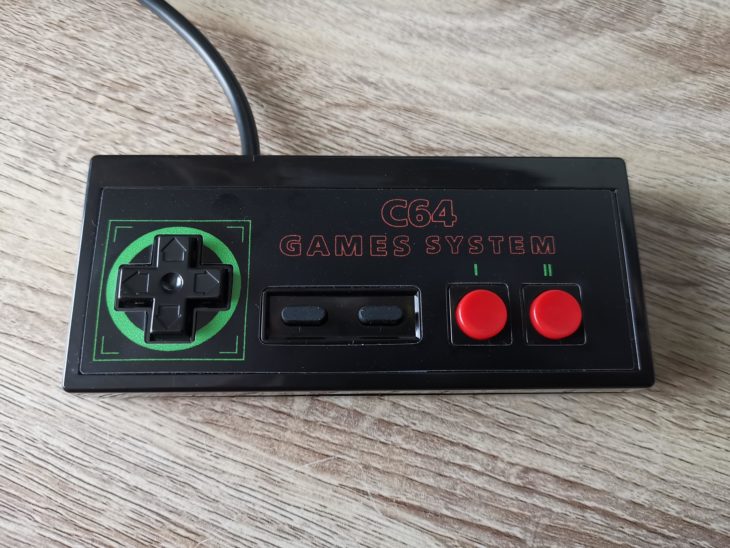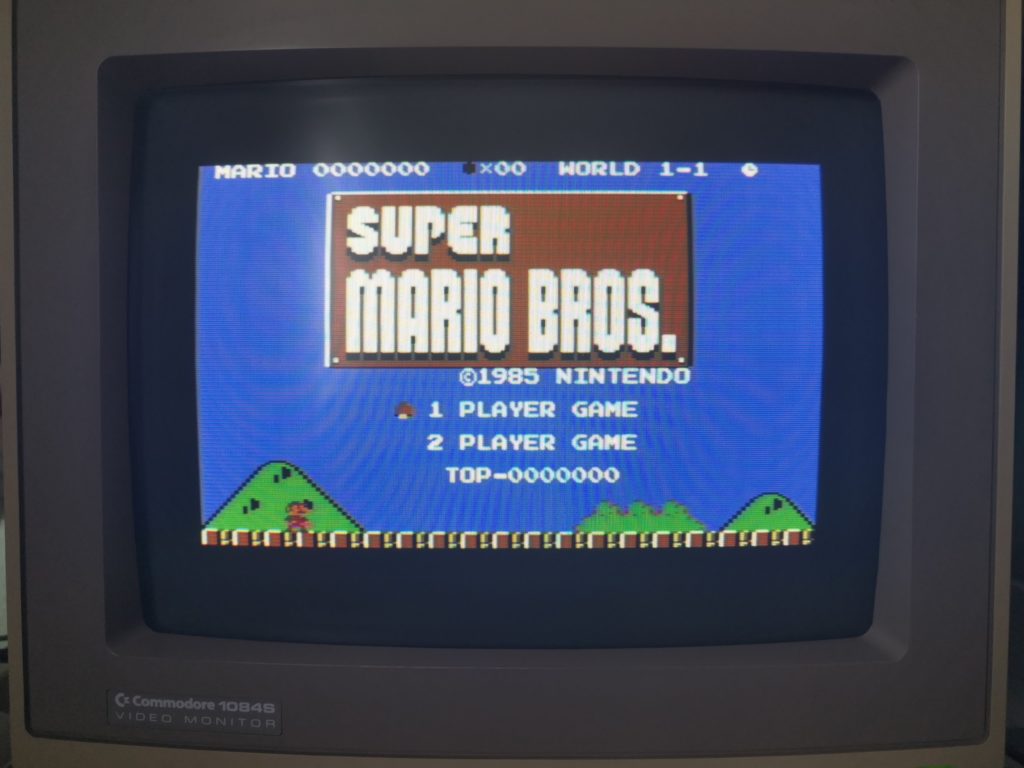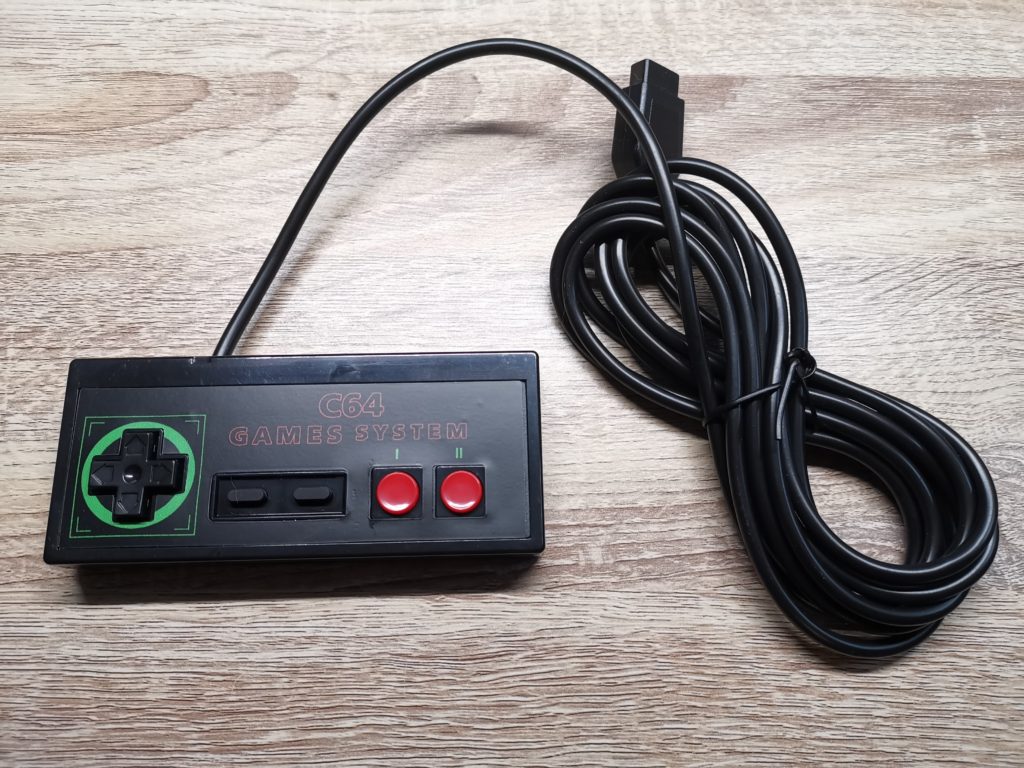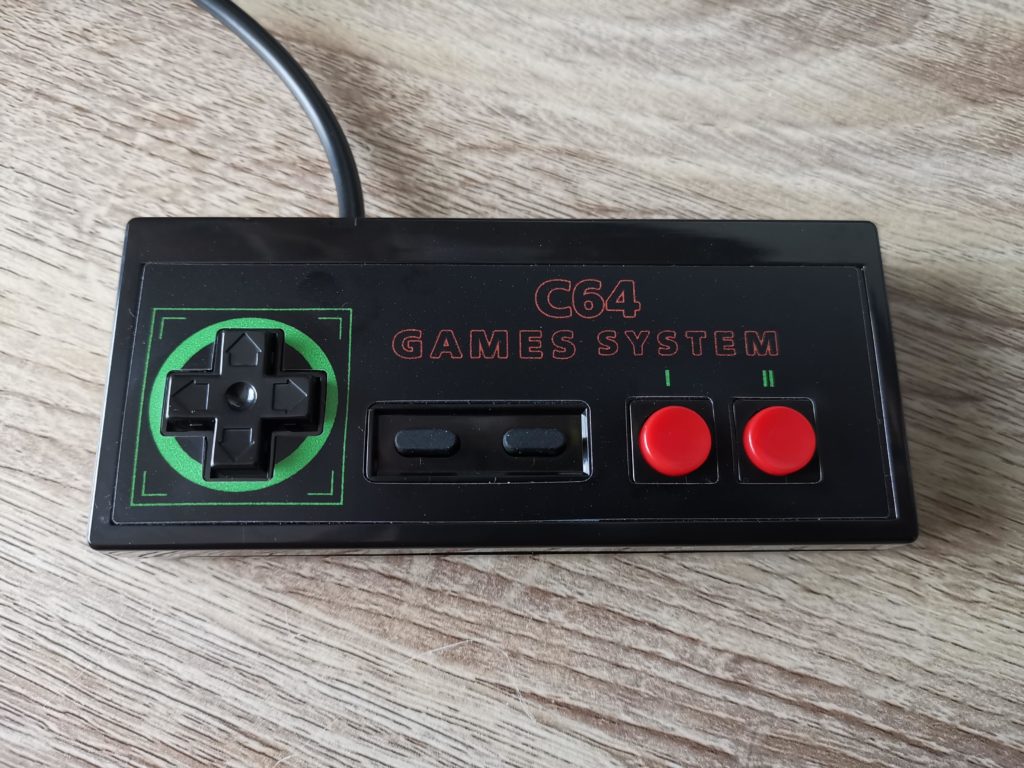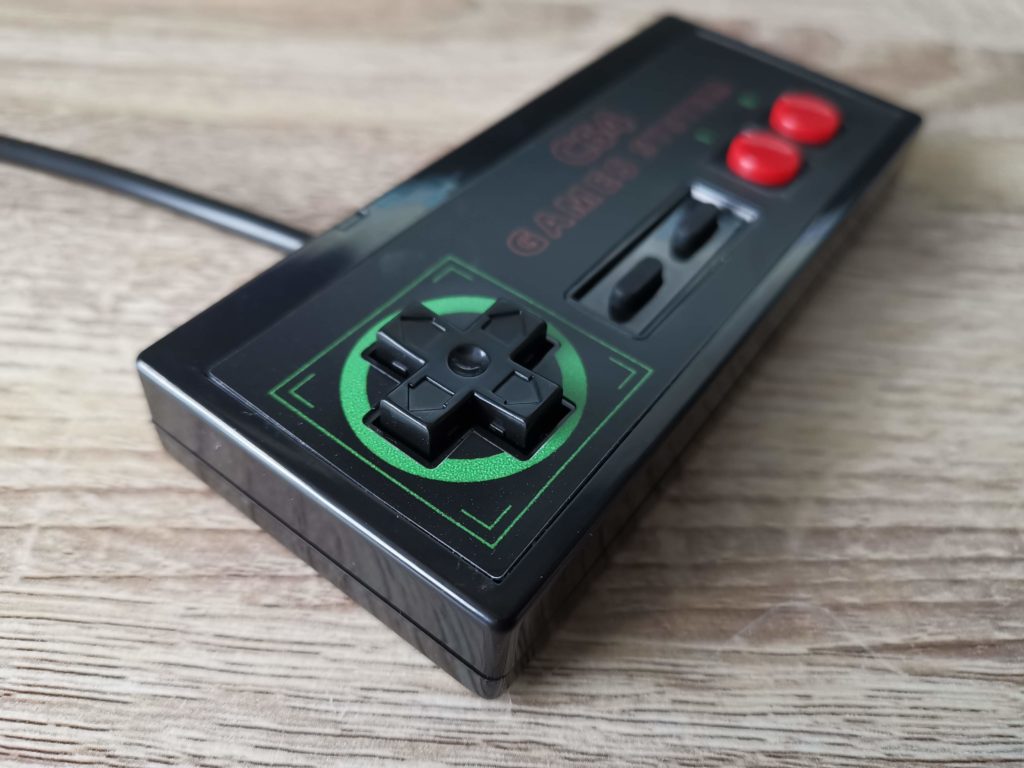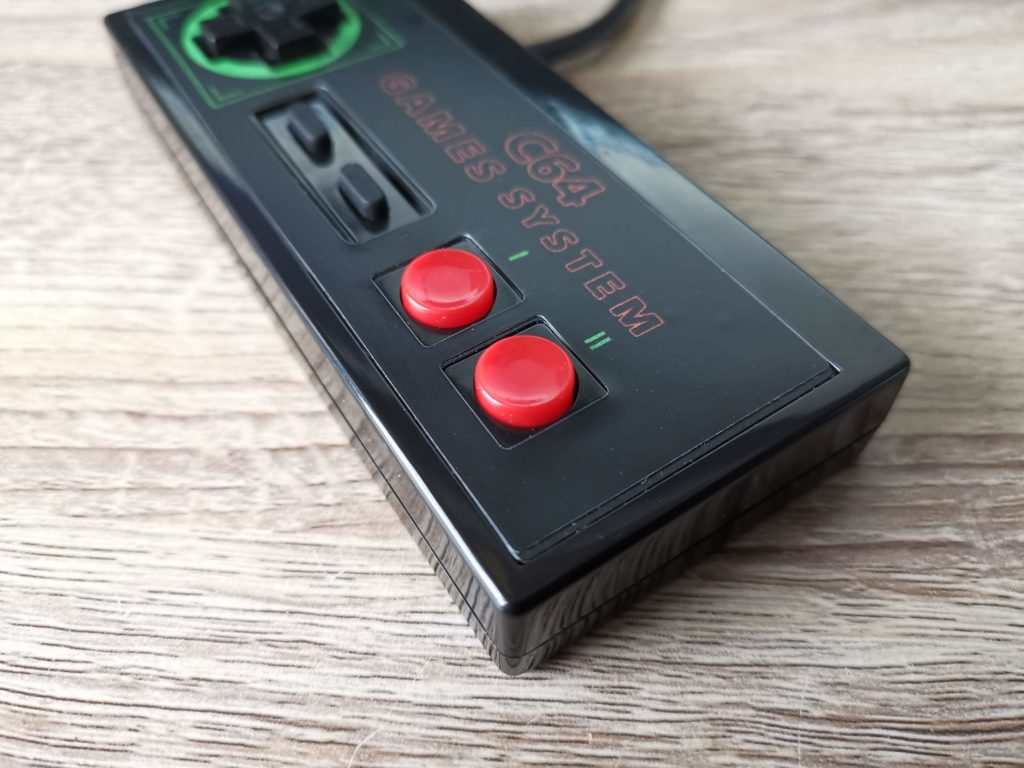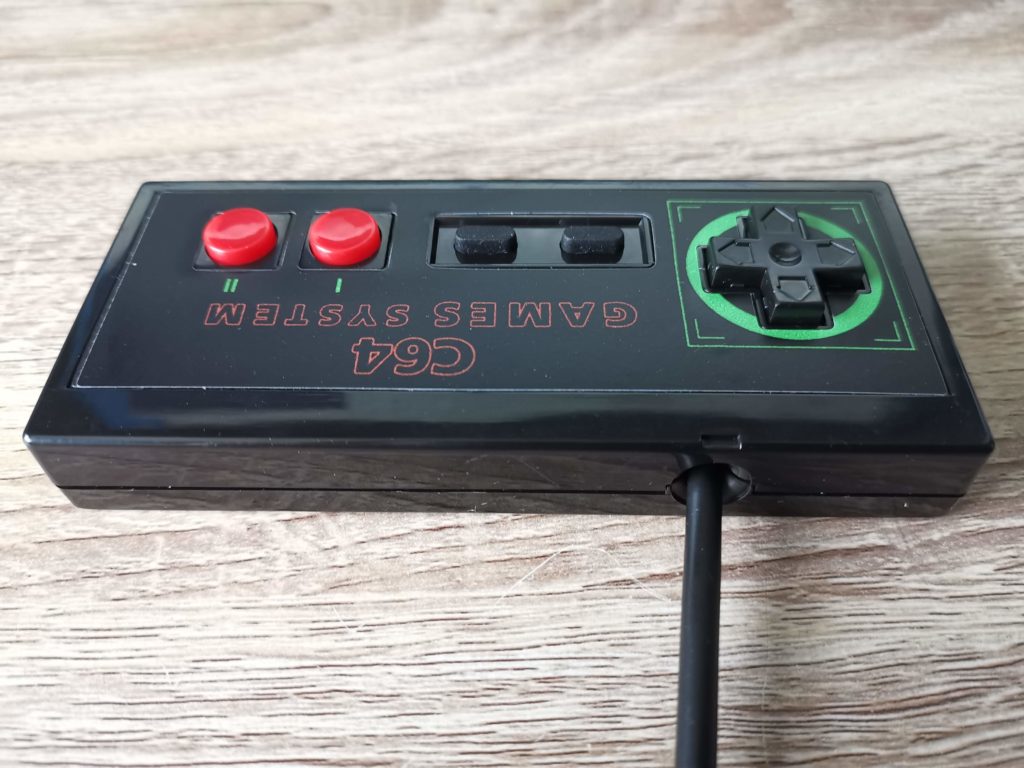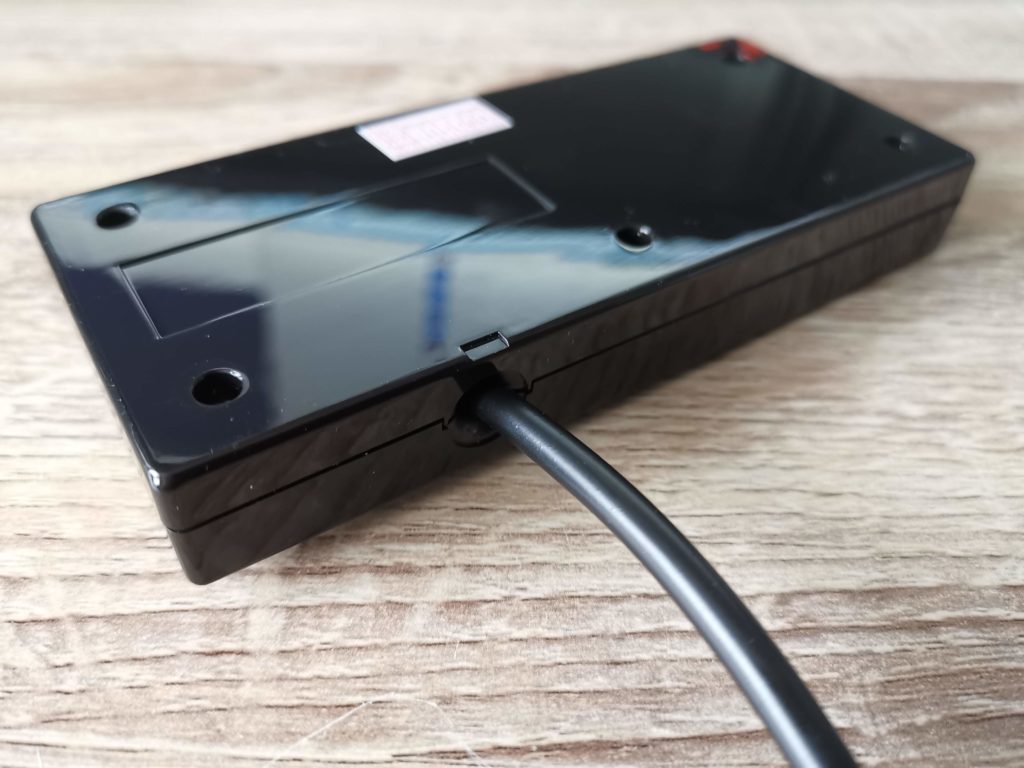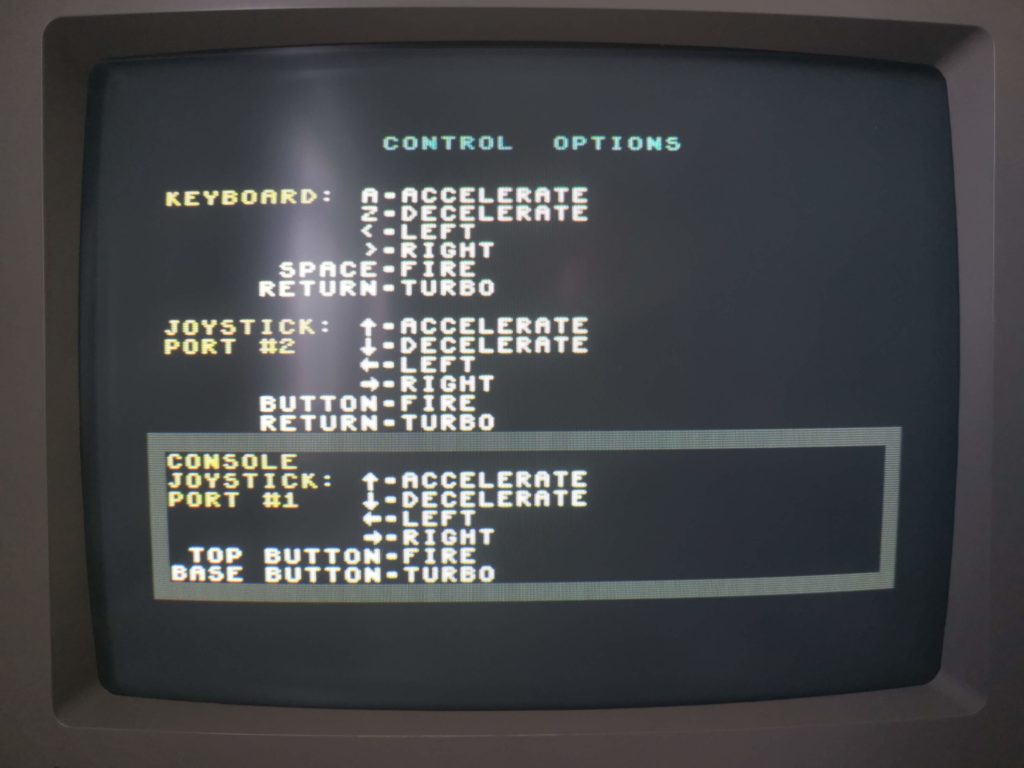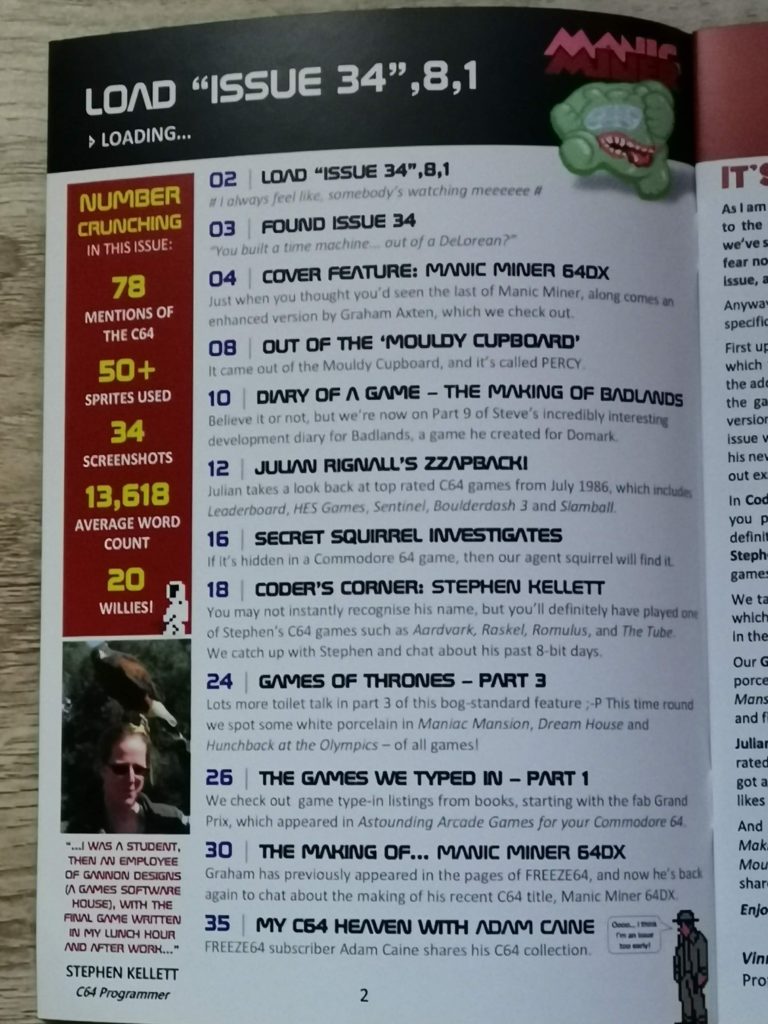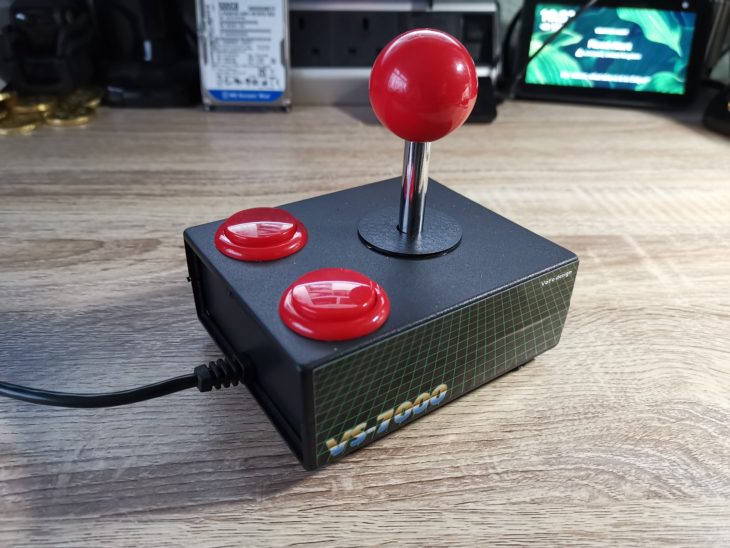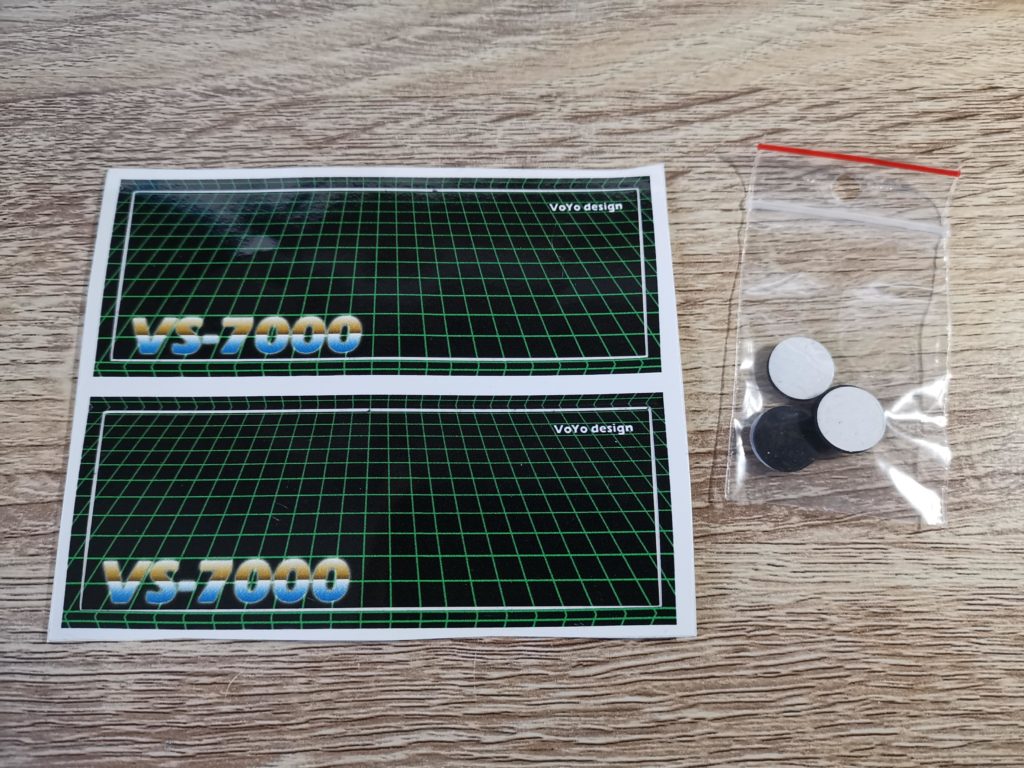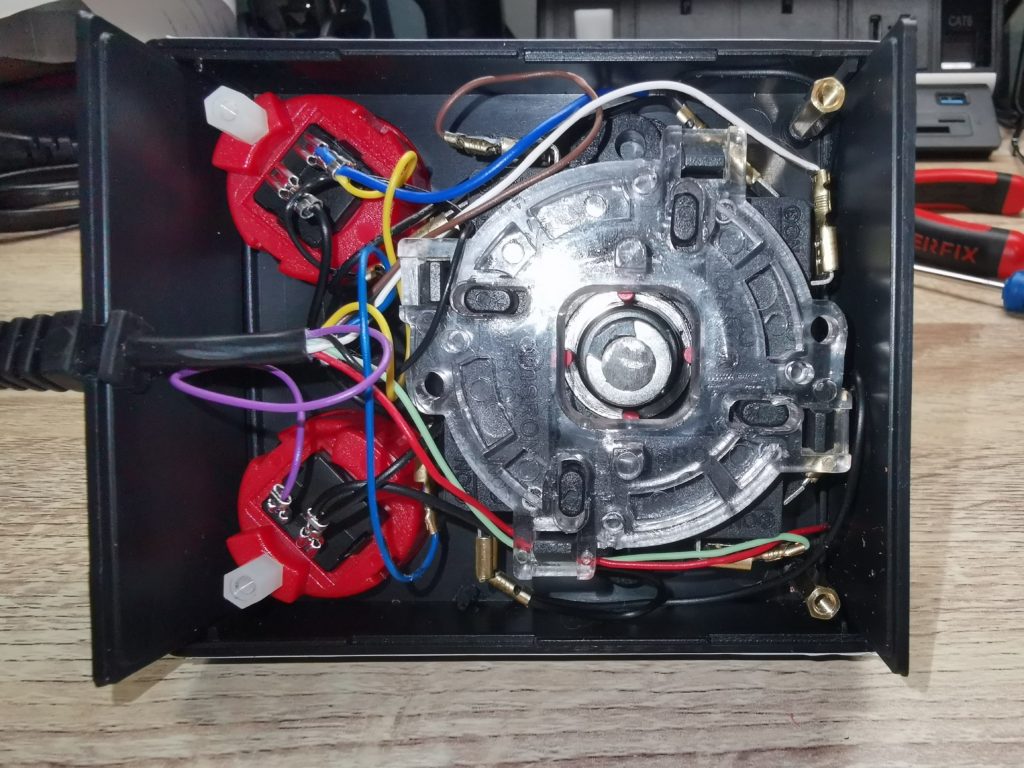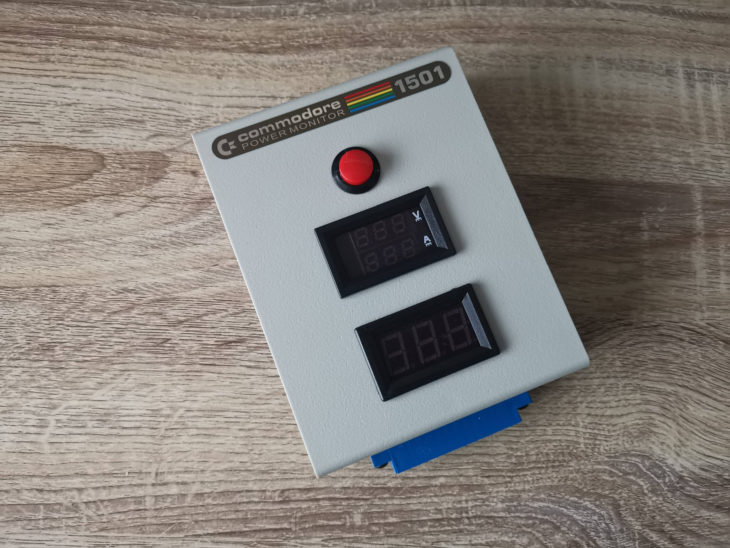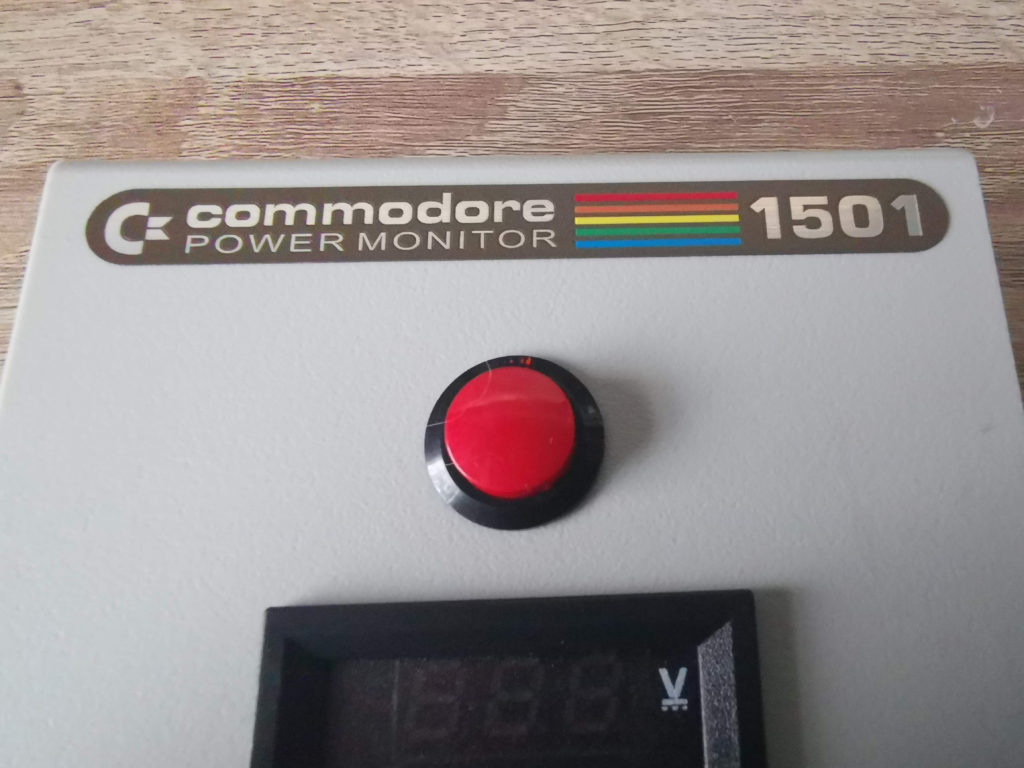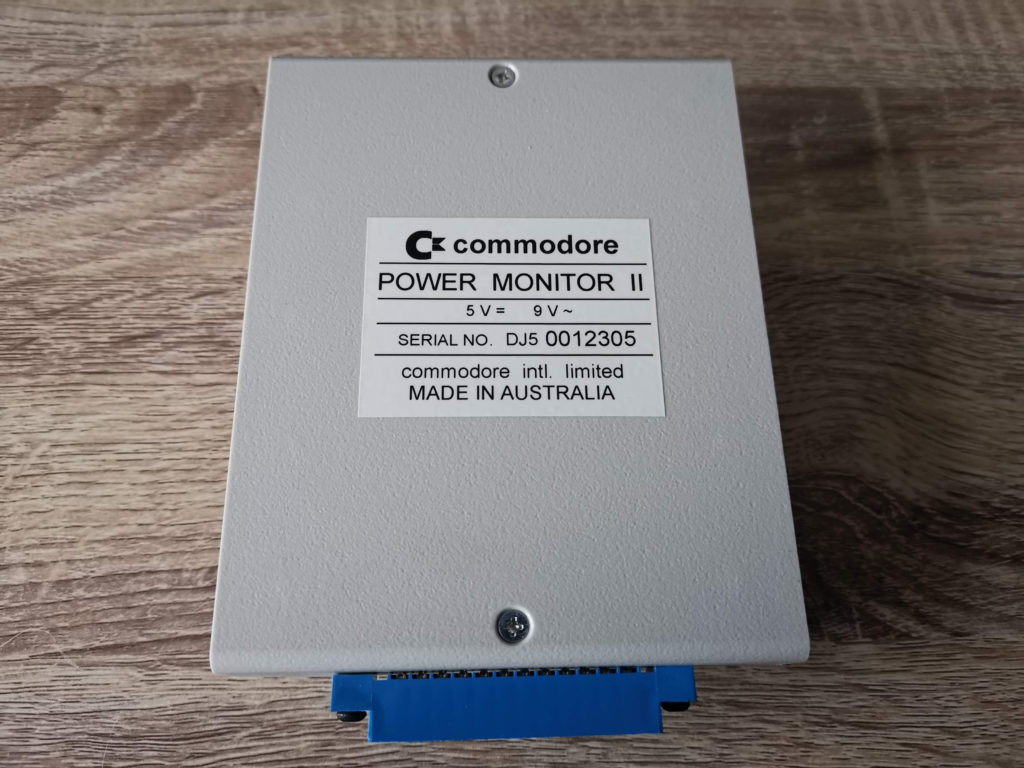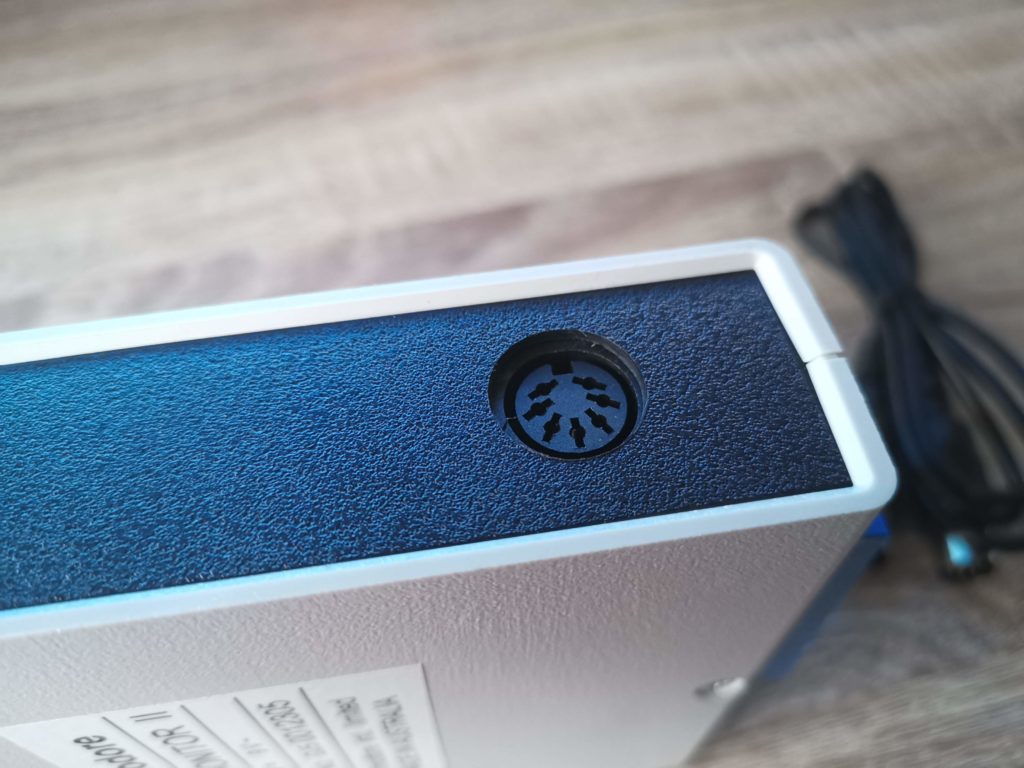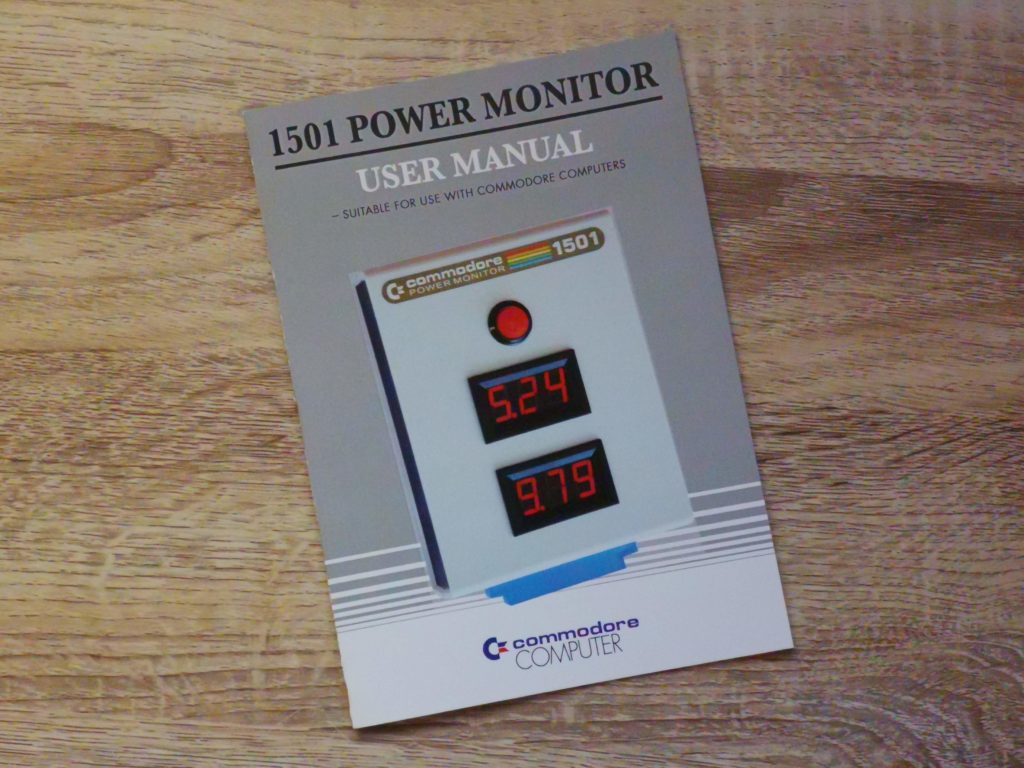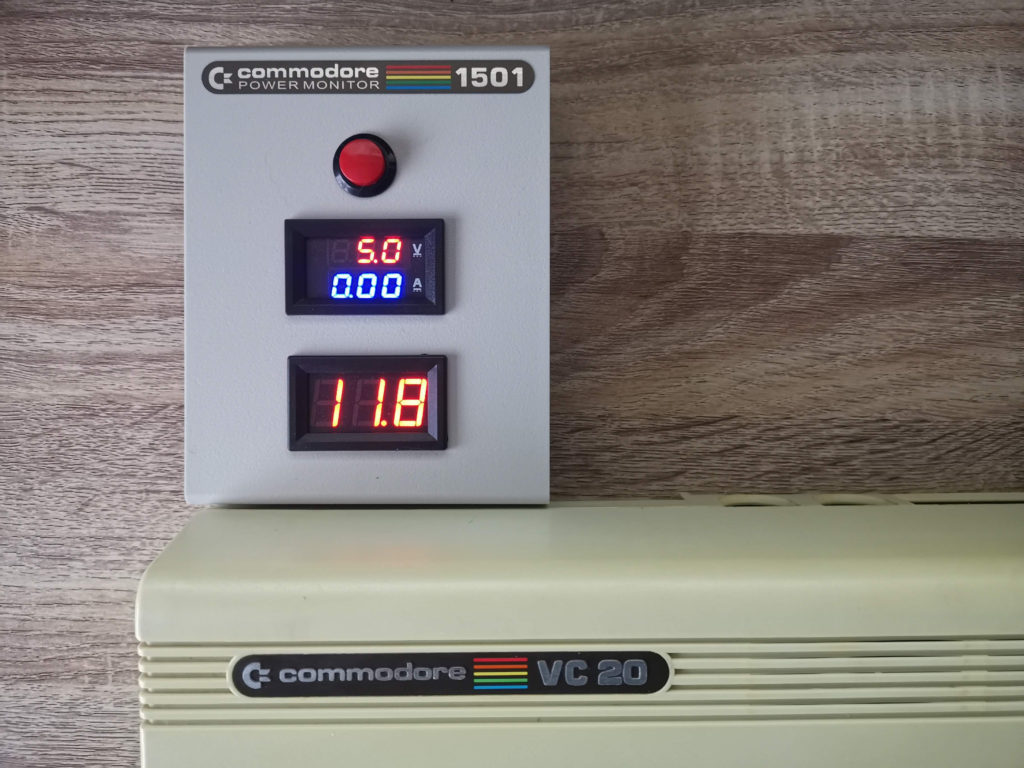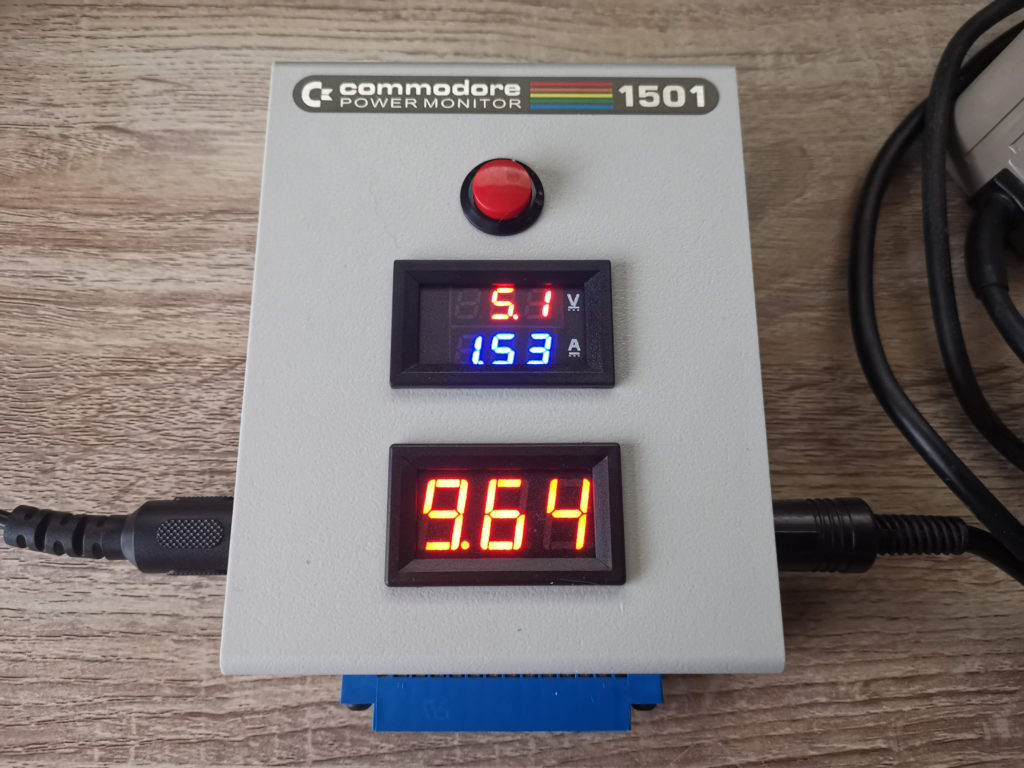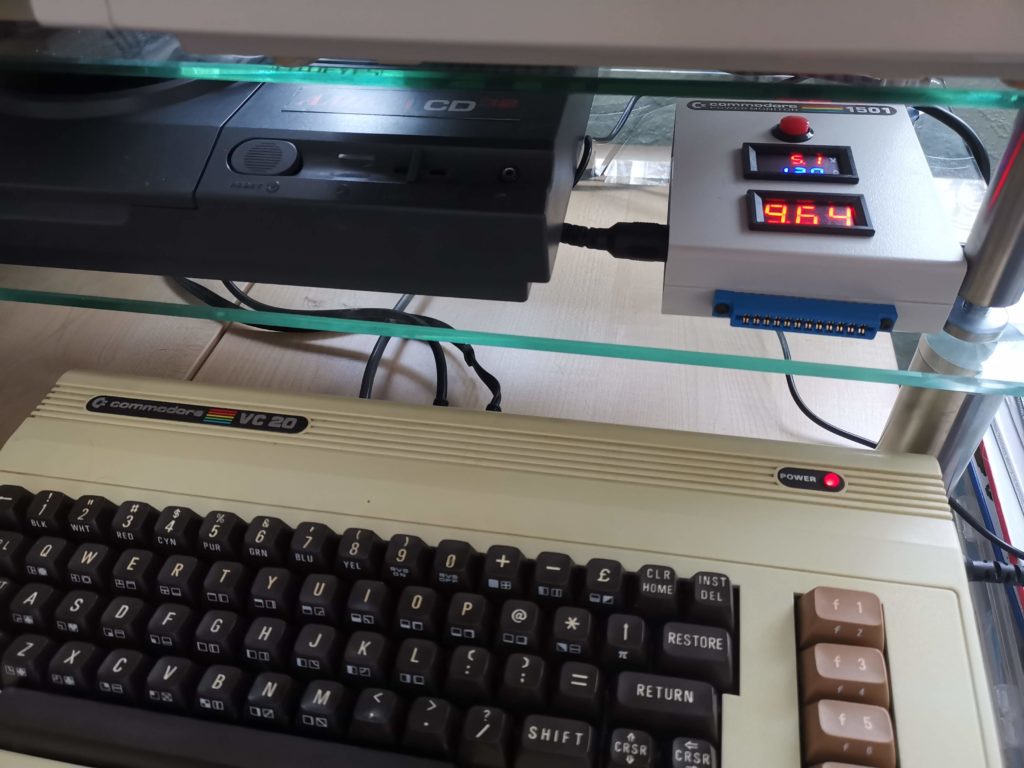Recently Tim Harris was kind enough to lend me a new cartridge based game called ‘The Valley’ for the Commodore 64 to try out. The cartridge arrived housed inside a sleek oversized cassette case complete with a very attractive inlay card.
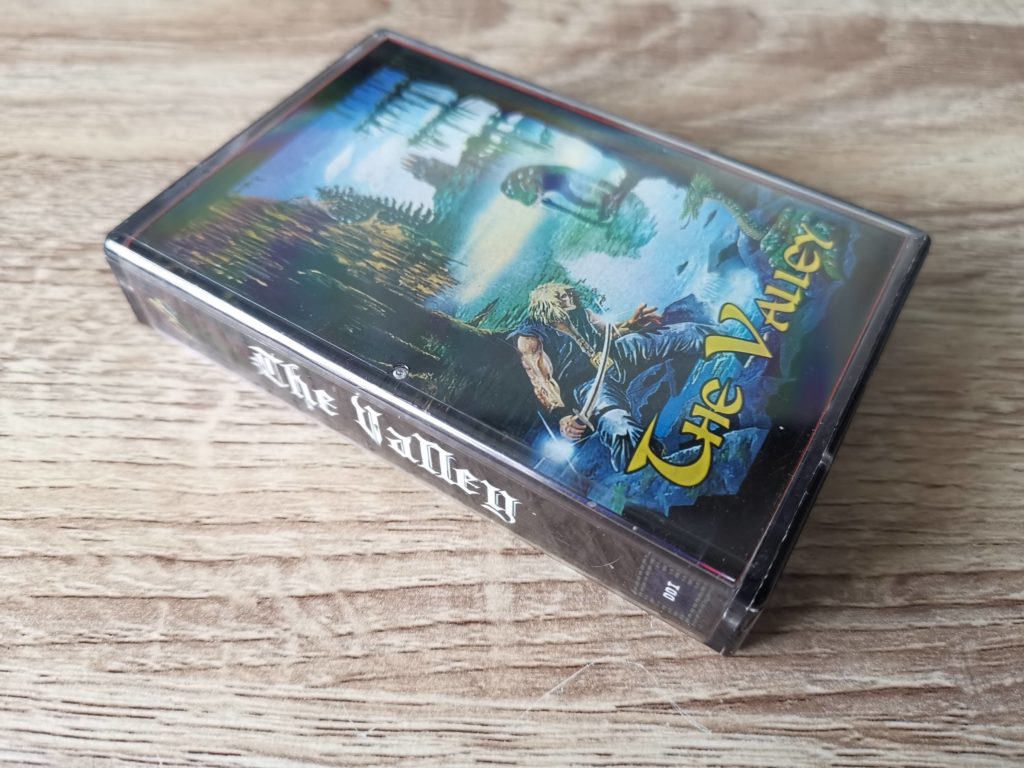
The Valley Game Case.
The rear inlay depicts the April 1982 cover of the British ‘Computing Today’ magazine (costing just 70p!) which is where ‘The Valley’ game actually originates from.
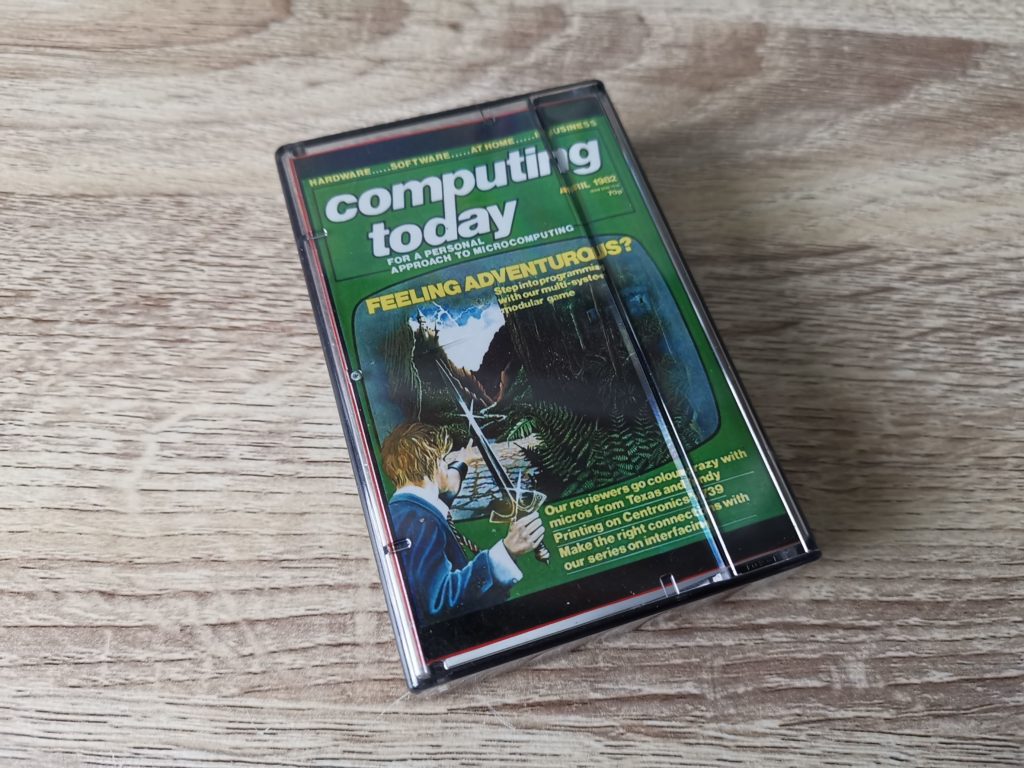
Back of case.
Upon opening the case it becomes immediately apparent that these are no ordinary cartridges. They are little electronic works of art.
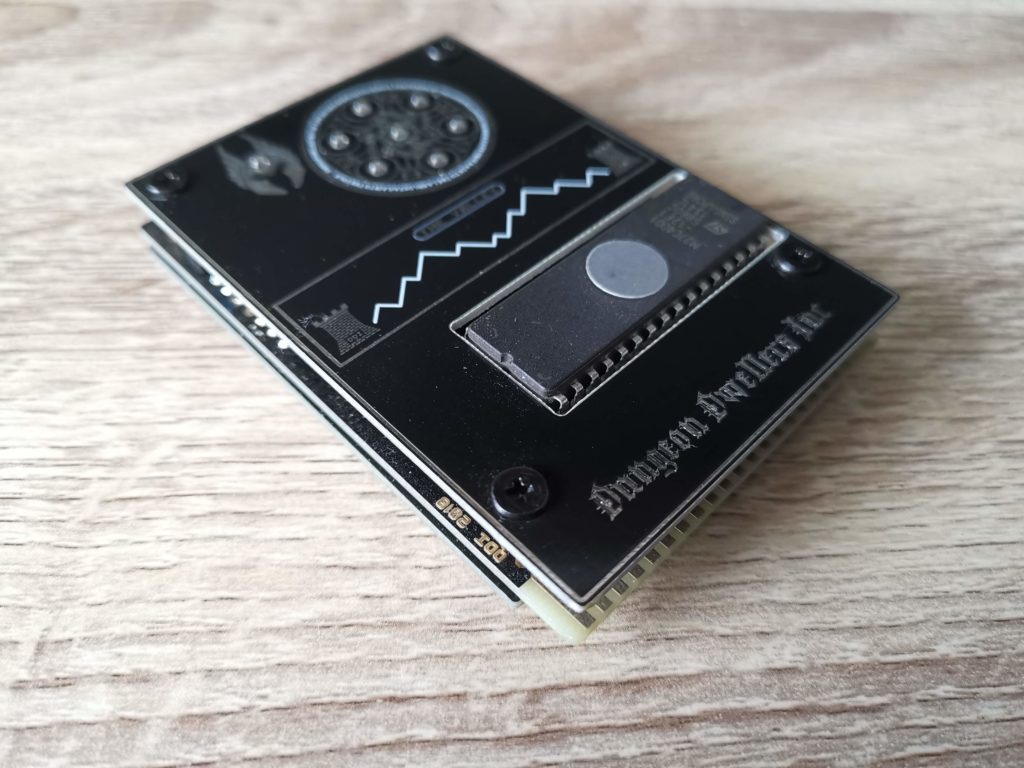
Cartridge Design 1

Cartridge Design 2
As you can see from the above two photos there are actually two completely different cartridges. However the difference is purely cosmetic as they both run the same game.
This slideshow requires JavaScript.
Rather than have a traditional plastic case these cartridges have been constructed in such a way that lets your see their inner workings. One consists of a PCB sandwiched between two purple perspex layers whilst the other is a triple decker PCB stack.
A Closer Look at the Two Cartridges
The black one… this is constructed from 3 PCB’s bolted together and is my personal favourite.
This slideshow requires JavaScript.
The purple one… this is made from a single PCB sandwiched between two sections of purple perspex.
This slideshow requires JavaScript.
Plugging the Carts In
Here’s what they look like plugged in…
This slideshow requires JavaScript.
So why exactly have the cartridges been created like this? Well part of the reason for this strange construction becomes obvious when you first plug the cartridges in and switch on the power. They light up like Christmas trees, the reason for which I will reveal shortly.
This slideshow requires JavaScript.
The Game
This game actually has quite some history to it and it all relates to that Computing Today magazine featured on the inlay card.
Back in the early 1980’s the magazine published The Valley in the form of a listing for the 32K Commodore PET. The listing was hundreds of lines long so it was broken down into more manageable chunks for budding adventurers to type in (and then spend hours on end bug checking).
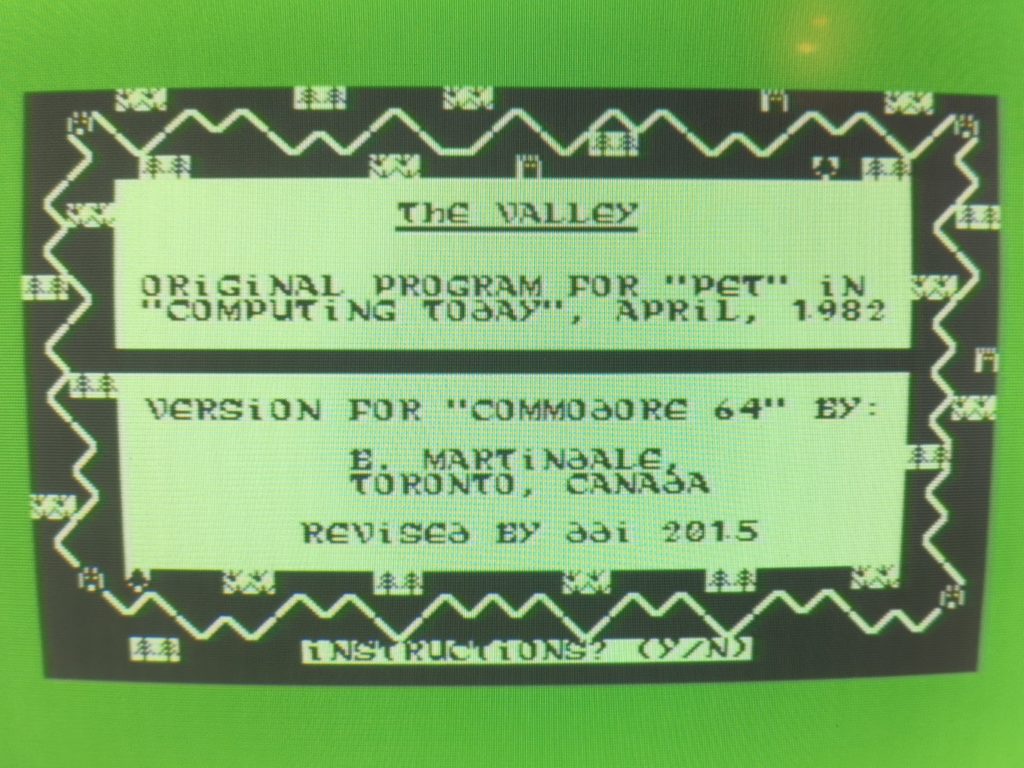
Title Screen.
This also made it relatively straightforward to convert the game to run on other machines as each chunk of code was accompanied by comprehensive documentation that described exactly how everything worked. A nice bonus of typing in games like this was having the option of tweaking the game to your liking. Nasty Troll kicking your arse? Just nerf it’s physical damage stats in the code!
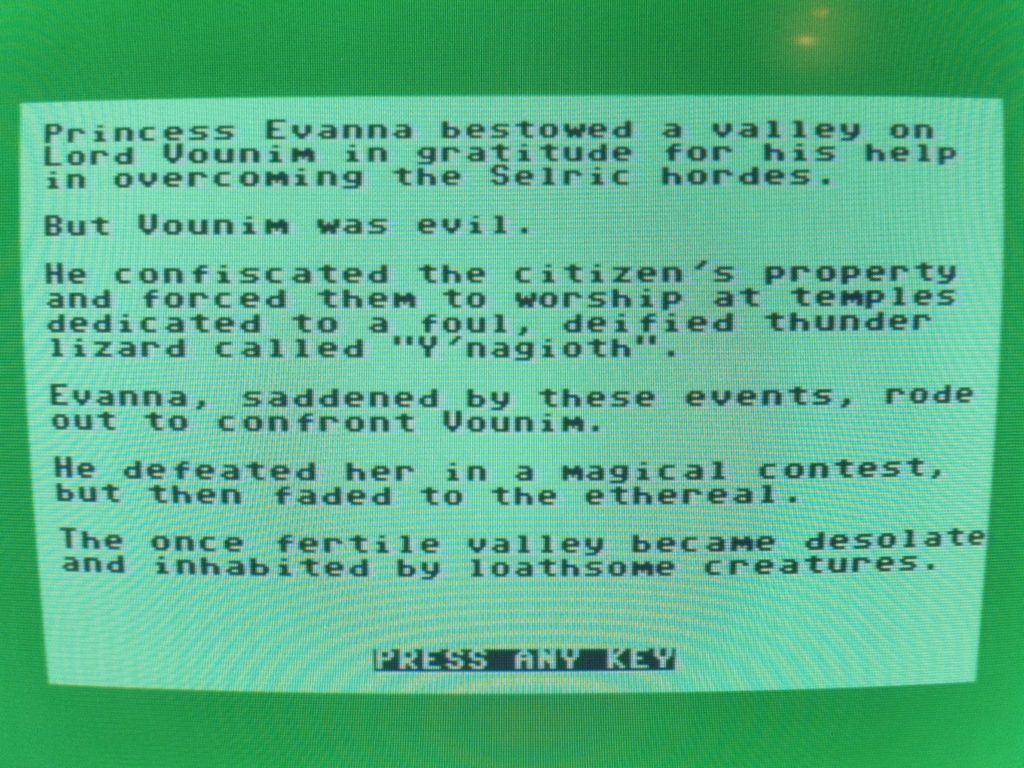
The games backstory.
The object of the game is to find the Amulet of Alarian from one of the temples and also locate the 6 gem stones that slot into it. You must also reach the rank of ‘Demon Killer’ so that you can find the Helm of Evanna and return it to the castle. Only by doing this will you save The Valley from the darkness that has engulfed it. To achieve all this, you, the hero, must travel across the valley battling many monsters and raiding temples to find treasures and stones for the amulet.
In this original form the game lacked a proper ending and ‘suffered from very poor gameplay’ according to Dungeon Dwellers Inc (DDI), the makers of this new incarnation of ‘The Valley’. DDI have taken the original game and enhanced it to make it more fun to play. The enhancements don’t just concern the coding of the game either… but link directly into the design of the cartridges.

A thing of beauty!
The cartridges feature graphics for both the Helm of Evanna and the Amulet of Alarian etched onto the PCB. The really cool thing though is that within the graphics are a series of LED’s which depict the presence of each item within your actual in-game inventory.
There are 8 LED’s to represent the helm, amulet and each of the 6 mystic stones. When you find one of these items in the game the corresponding LED will light up! If you are lucky enough to find all the items there are LED’s on the back of the cart that will start to pulse signifying that you a nearing the games end.
A handy little extra feature is the addition of a reset button at the back of the cartridge which is itself illuminated by a red LED.
The Game
DDI have added a very atmospheric title screen complete with music to the start of the game that really sets the mood. However this is the only sound that you will hear from the game (unless you manage to beat it) as the game is played in complete silence. There is supposed to be an animated ending complete with sound but I’ve not come anywhere close to seeing that yet.
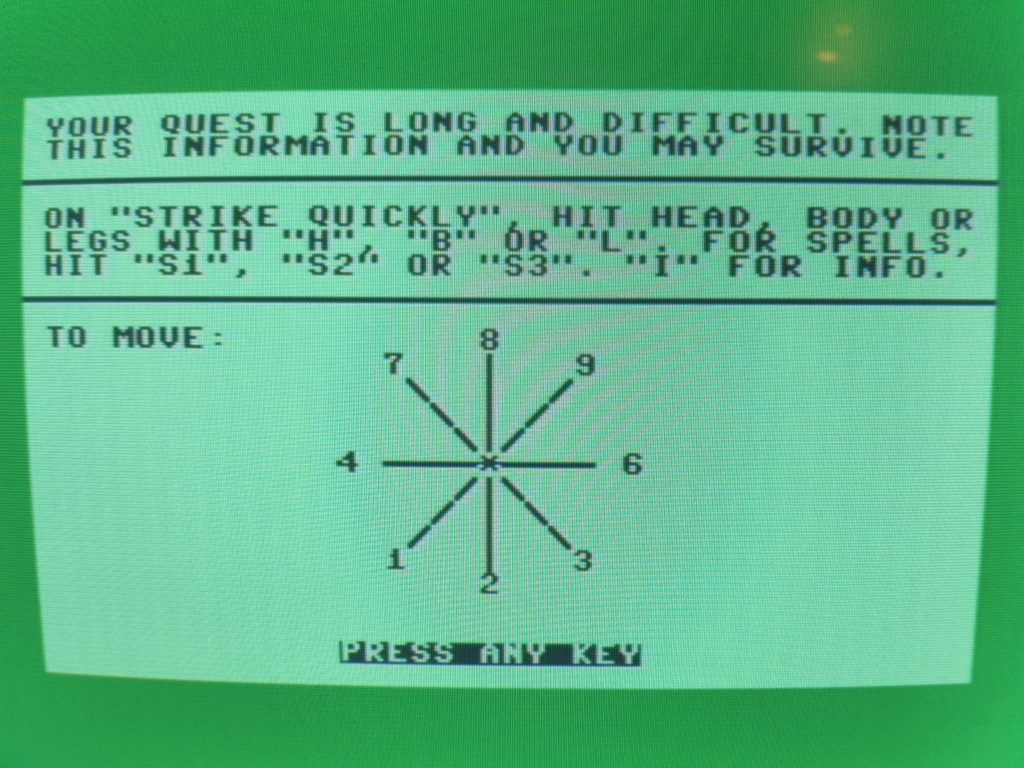
You control the game using the numeric keys. Very strange layout at first but you get do get used to it. Shame there appears to be no joystick support though…
You begin the game by naming your character and choosing your class. The 5 options available are; Wizard, Ranger, Barbarian, Warrior and Cleric. The choice you make affects the in-game stats of your character, namely your Combat Strength, PSI (magic) Power and Stamina. If you ignore the choices on offer and select a different number then you are randomly assigned a class from one of 7 alternatives including: Villager, Thief, Bandit, Archer, Druid, Knight and Warlock.
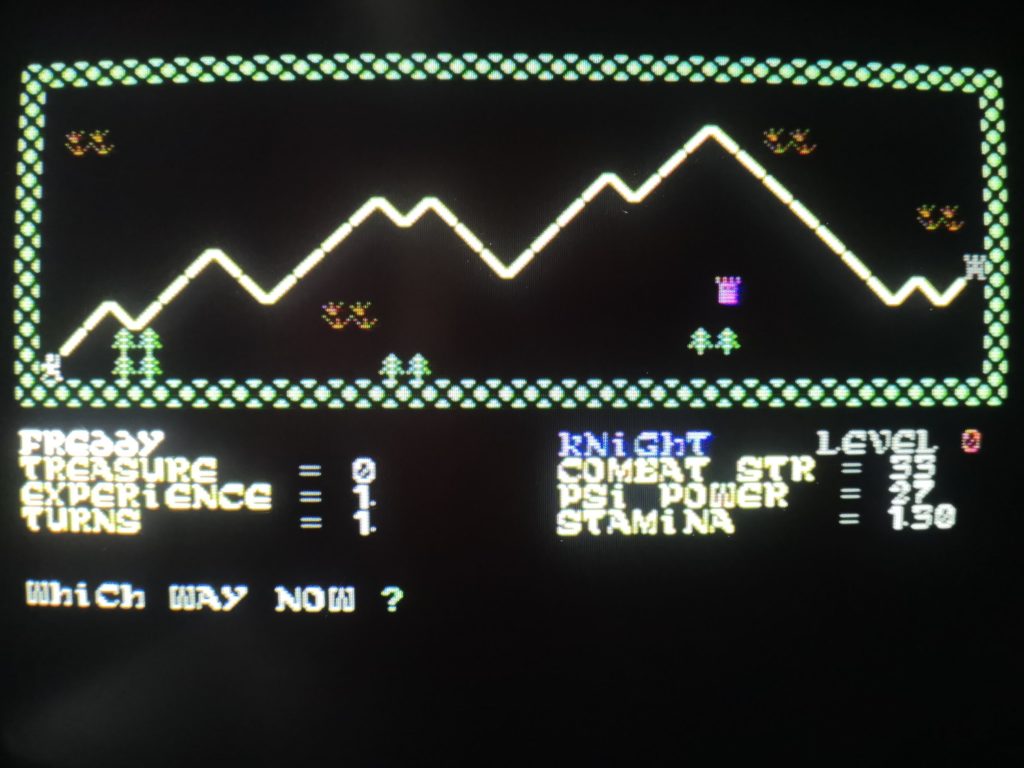
The main game screen.
The main game screen then appears and the map of the kingdom is drawn up. The map and everything within it is generated randomly each time you start the game so no two play-throughs will ever be the same.
You will start in south west corner of the map on the safe path. So long as you stay on this path you will never be attacked. However once you stray off it it’s game on. Away from the safety of the path you can be attacked even if you are standing still so don’t wander off for a cuppa or you will likely find your hero dead when you return!
Combat
The Valley is a proper old school RPG that requires a healthy dose of imagination to be properly enjoyed. Other than the visual representation of where you are (Valley, Forest, Swamp, Tower etc.) there are no graphics to depict enemies or battles. All encounters are text based and the battles performed by rolls of the dice. When you encounter a foe you will be informed of their presence via text and a (semi) turn-based battle will commence. Whatever moves they make and the damage they do will be displayed on screen.
I previously described the combat as ‘semi turn-based’ and that’s because it uses a mixture of turn-based moves and real-time inputs from you during battles. When it is your turn to move a ‘Strike Quickly’ message will flash up on the screen and you literally have about half a second to press a key and select your attack. If you are too slow you miss your chance to retaliate and the monster gets another swipe at you. This is especially frustrating when you have to cast spells as you have to press ‘S’ to signify that you want to cast a spell and then press ‘1’, ‘2’ or ‘3’ to select which one. All of these key presses are subject to the same strict time restraints which can lead to frustration when you get flummoxed mid-battle.
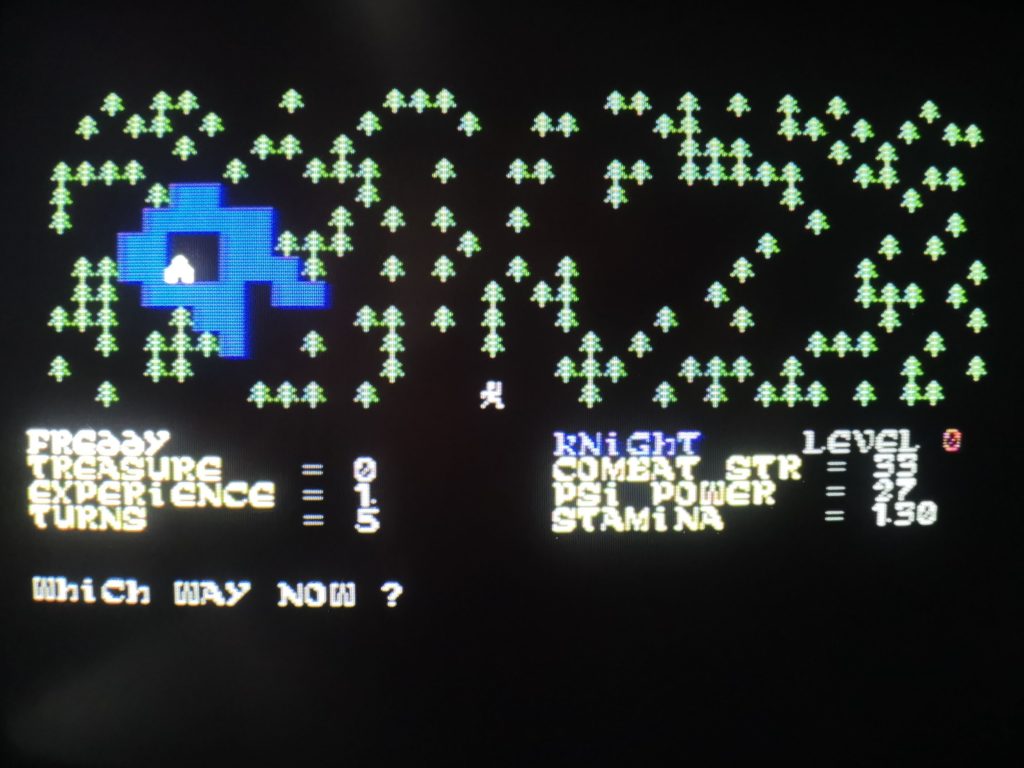
Exploring a forest in The Valley.
As I said combat is all a roll of the dice so both you and the enemy can and will miss and attacks will do a random amount of damage, sometimes none at all. Consequently you need to be prepared for anything. Occasionally you will surprise an enemy and get a chance at striking first or evading them – but only if you spot the opening message and press the correct key in time to take advantage of the situation.
I must admit I would have preferred a true turn based approach where you can take time to select your move and play at a relaxed pace. However this does make battles more tense, albeit at the expense of risking cramp in your hands from hovering over the keyboard like a praying mantis all the time!
Speaking of moves you have 6 at your disposal, 3 physical attacks and 3 magic. Physical attacks consist of Head, Body or Leg strikes with head strikes being less likely to succeed but rewarding success with more damage, whilst leg strikes are most likely to hit home but do the least amount of damage. The magic spells you can cast are Sleep, PSI Lance and Lightning however the latter two can only be cast once you reach level 8 and 16 respectively.
Damage reduces your stamina and combat strength and if either of these falls to zero your hero dies. To recover from damage you just need to move around. After every turn your stats slowly increase so it pays to keep moving although you can’t move far before you encounter another enemy to fight.
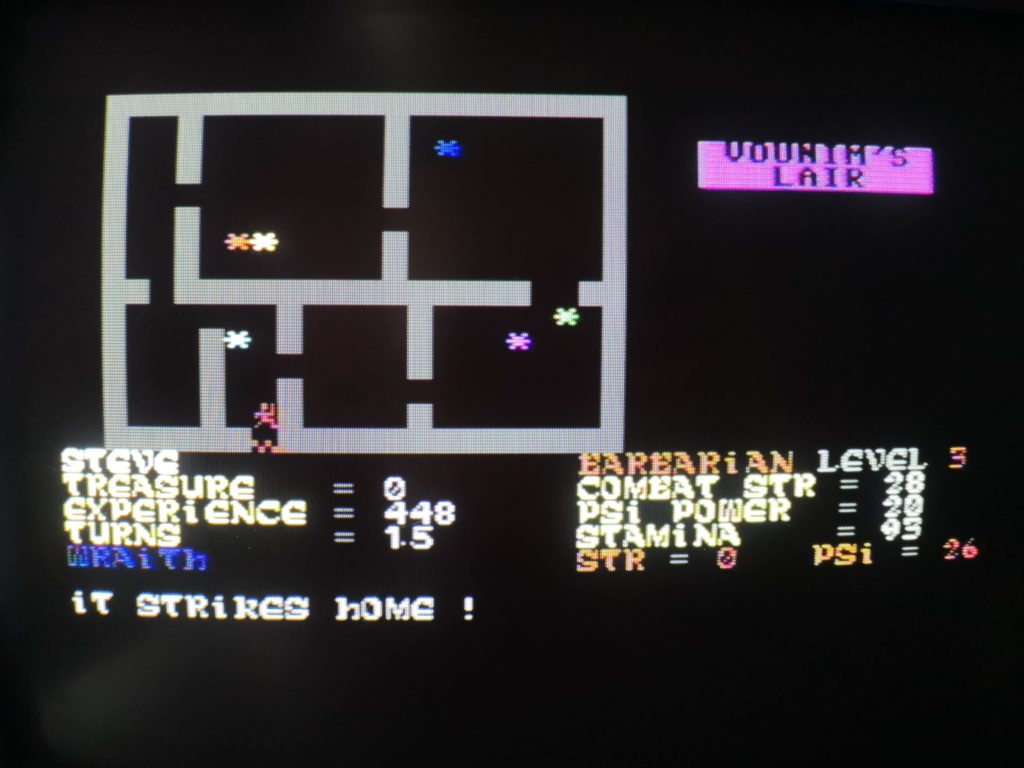
Inside a lair… each of those asterisks could potentially, if you are really lucky, be the amulet…
Occasionally you will encounter some treasure or a ‘place of ancient power’ rather than enemies with the latter granting welcome stat bonuses to aid you in your adventure.
When you venture into a swamp, forest or the Tower the upper half of the screen changes to show the map for that area. Forests have temples to explore whilst the swamps have lairs, each comprising of a single floor. The Tower is split into many floors and is the only place you are able to find the 6 stones, but only once you have located the Amulet of Alarian. If you try to enter the tower before you have located this your entry will be barred.
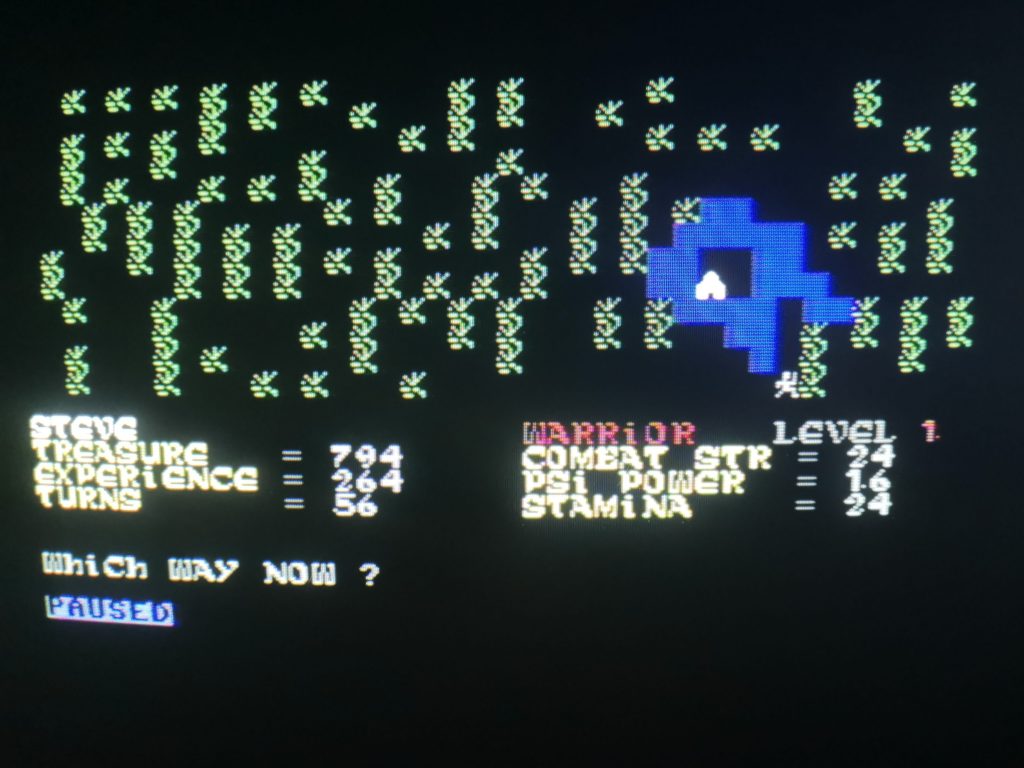
Exploring a swamp in The Valley
Progress can be saved by making your way to one of the two castles that are found at either end of the road – assuming you manage to get there in one piece! Additionally if you manage to place all six gem stones in the amulet it will grant you the power of resurrection… but only once. If you are slain and resurrected the stones disappear and you will need to find another set in the tower again!
Verdict
The Valley is a pretty unforgiving and difficult game I have to admit and I’m not very good at it. I was constantly either too slow pressing the keys or pressing the wrong ones in the heat of battle. Consequently I wasn’t able to get very far during the time I had the game for. However the allure of lighting up those LED’s on the cartridge was very strong indeed and it definitely had that ‘one more go’ quality about it. It’s not cheap but it’s definitely something I’d consider to be a collectors item and something I would treasure for years to come.
At the time of writing The Valley cartridges are only available from DDI. You can find their website here: sys64738. I believe the game will cost $80 plus postage to your location.
If you would like to try the game first to see if you like it before parting with a not insignificant amount of money it is also available to download from CSDB.




